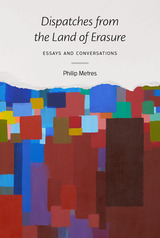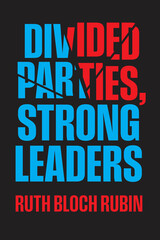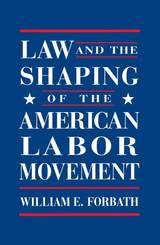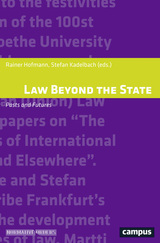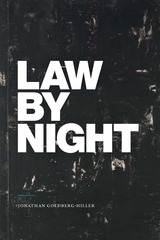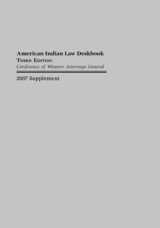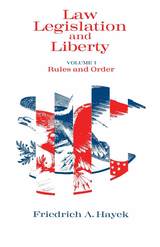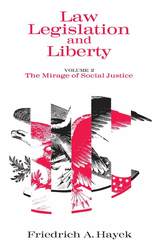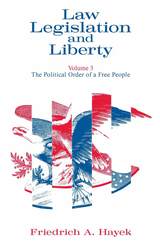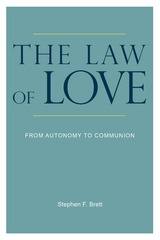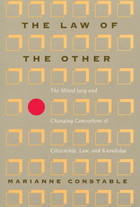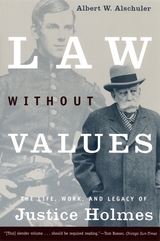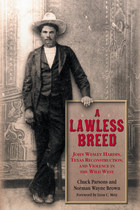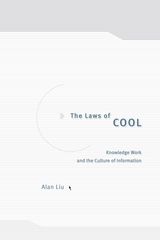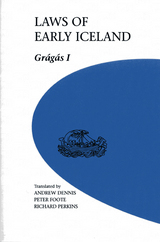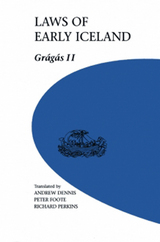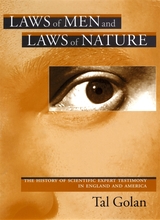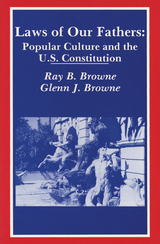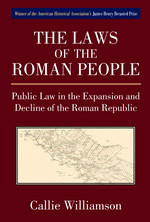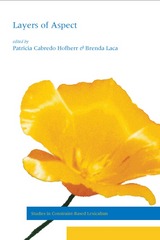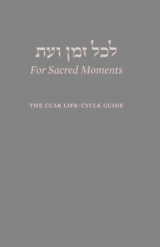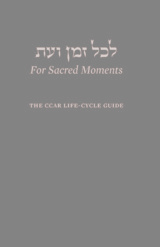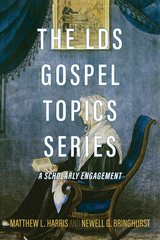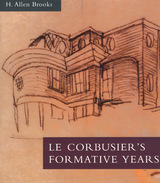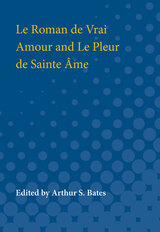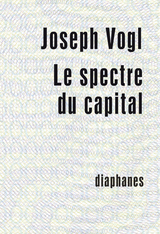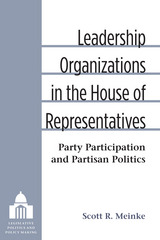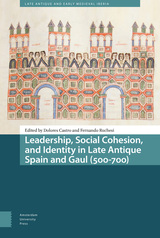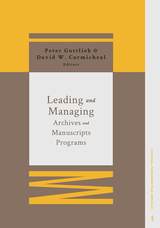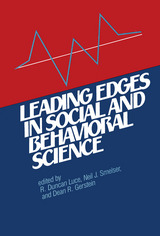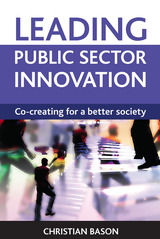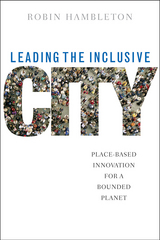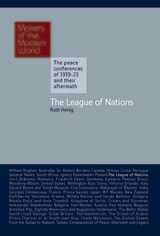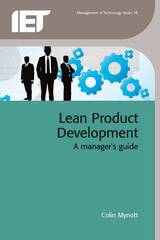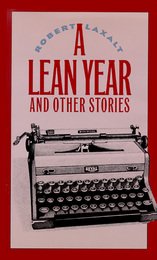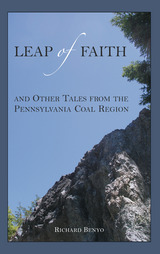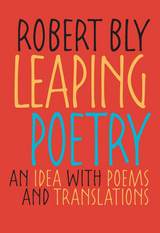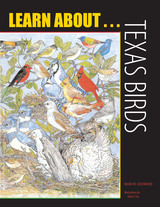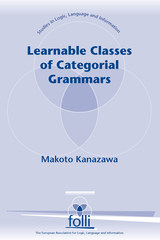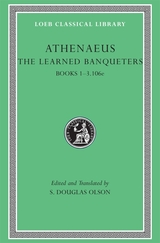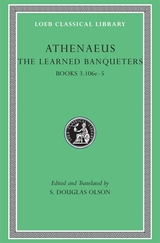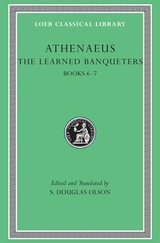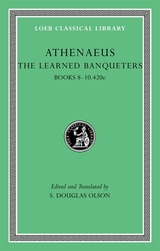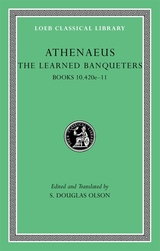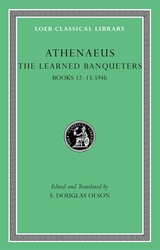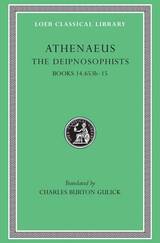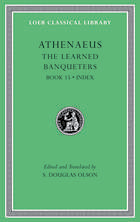Law and the Shaping of the American Labor Movement
William E. Forbath
Harvard University Press, 1991 Why did American workers, unlike their European counterparts, fail to forge a class-based movement to pursue broad social reform? Was it simply that they lacked class consciousness and were more interested in personal mobility? In a richly detailed survey of labor law and labor history, William Forbath challenges this notion of American “individualism.” In fact, he argues, the nineteenth-century American labor movement was much like Europe’s labor movements in its social and political outlook, but in the decades around the turn of the century, the prevailing attitude of American trade unionists changed. Forbath shows that, over time, struggles with the courts and the legal order were crucial to reshaping labor’s outlook, driving the labor movement to temper its radical goals.
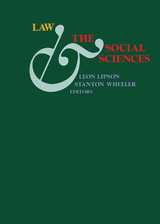 Law and the Social Sciences
Leon Lipson
Russell Sage Foundation, 1987 The notion of law as a social phenomenon would have surprised educators and scholars a century ago. For them, law was a science and the library was the ultimate source of all legal knowledge. Our contemporary willingness to see law in a social context—reflecting social relations, for example, or precipitating social changes—is a relatively recent development, spurred during the last quarter century by the work of a generation of scholars (mostly social scientists and law professors) who believe the perspectives of the social sciences are essential to a better understanding of the law. Law and the Social Sciences provides a unique and authoritative assessment of modern sociolegal research. Its impressive range and depth, the centrality of its concerns, and the stature of its contributors all attest to the vitality of the law-and-society movement and the importance of interdisciplinary work in this field. Each chapter is both an exposition of its author’s point of view and a survey of the pertinent literature. In treating such topics as law and the economic order, legal systems of the world, the deterrence doctrine, and access to justice, the authors explore overlapping themes—the tension between public and private domains, between diffused and concentrated power, between the goals of uniformity and flexibility, between costs and benefits—that are significant to observers not only of our legal institutions but of other social systems as well.
 Law and the Social Sciences: The Second Half Century
Julius Stone
University of Minnesota Press, 1966 Law and the Social Sciences was first published in 1966. Minnesota Archive Editions uses digital technology to make long-unavailable books once again accessible, and are published unaltered from the original University of Minnesota Press editions. The author, a distinguished authority on law, provides an illuminating and challenging discussion of the social aspects of law and legal problems. As a background to some penetrating observations, he takes stock of the contributions and interrelations of the bodies of knowledge, from both the juristic and the social science side, which bear upon the study of law at the present time. He is concerned to show the respects in which jurisprudential ideas in this area have been stimulated and clarified by work in the social sciences, and, conversely, to draw attention to the need for the increased interest of social scientists in this area to take account of juristic insights, many of them of long standing. He points out some of the dangers, not limited to waste of effort, arising from "parochialism" on the part of either the lawyer or the social scientist. The final section is devoted to a study of the contributions, potentialities, and limits of behavioralist and computer techniques in understanding and operating the appellate judicial process. The book is based on a series of three lectures given by the author as the William S. Pattee Memorial Lectures sponsored by the University of Minnesota Law School.
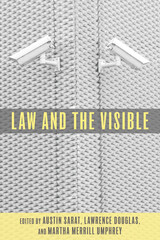 Law and the Visible
Edited by Austin Sarat, Lawrence Douglas, and Martha Merrill Umphrey
University of Massachusetts Press, 2021 If you take a video of police officers beating a Black man into unconsciousness, are you a witness or a bystander? If you livestream your friends dragging the body of an unconscious woman and talking about their plans to violate her, are you an accomplice? Do bodycams and video doorbells tell the truth? Are the ubiquitous technologies of visibility open to interpretation and manipulation? These are just a few of the questions explored in the rich and broadly interdisciplinary essays within this volume, Law and the Visible, the most recent offering in the Amherst Series for Law, Jurisprudence, and Social Thought.
Individual essays discuss the culpability of those who record violence, the history of racialized violence as it streams through police bodycams, the idea of digital images as objective or neutral, the logics of surveillance and transparency, and a defense of anonymity in the digital age.
Contributors include Benjamin J. Goold, Torin Monahan, Kelli Moore, Eden Osucha, Jennifer Peterson, and Carrie A. Rentschler.
 Law and the Web of Society
Cynthia L. Cates and Wayne V. McIntosh
Georgetown University Press, 2001 From birth certificates and marriage licenses to food safety regulations and speed limits, law shapes nearly every moment of our lives. Ubiquitous and ambivalent, the law is charged with both maintaining social order and protecting individual freedom. In this book, Cynthia L. Cates and Wayne V. McIntosh explore this ambivalence and document the complex relationship between the web of law and everyday life. They consider the forms and functions of the law, charting the American legal structure and judicial process, and explaining key legal roles. They then detail how it influences the development of individual identity and human relationships at every stage of our life cycle, from conception to the grave. The authors also use the word "web" in its technological sense, providing a section at the end of each chapter that directs students to relevant and useful Internet sites. Written for upper-level undergraduate and graduate students in law and society courses, Law and the Web of Society contains original research that also makes it useful to scholars. In daring to ask difficult questions such as "When does life begin?" and "Where does law begin?" this book will stimulate thought and debate even as it presents practical answers.
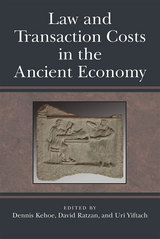 Law and Transaction Costs in the Ancient Economy
Dennis P. Kehoe, David M. Ratzan, and Uri Yiftach, editors
University of Michigan Press, 2015 Transaction costs (TC) are the “friction” in an economic system, and their analysis is vital to understanding institutional design and economic performance. Law and Transaction Costs in the Ancient Economy is the first volume to collect specific studies from a transaction cost perspective. The volume offers models of this new way of looking at ancient evidence, and suggests ways in which traditional subject areas might inform problems in contemporary economics and legal studies. After the editors’ methodological introduction, the contributors investigate the roles and effects of transaction costs in fourth-century Athens, Ptolemaic Egypt, the Roman Empire, and late antiquity, on the basis of legal texts, papyri, and inscriptions. Collected here are some of the leading voices on TC analysis in ancient history, as well as established scholars, including several who do not usually publish in English: Alain Bresson, Giuseppe Dari-Mattiacci, Rudolf Haensch, Dennis Kehoe, François Lerouxel, J. G. Manning, Brian Muhs, Josiah Ober, David M. Ratzan, Gerhard Thür, and Uri Yiftach. This volume will speak to those who identify with traditional subject areas, like epigraphy or Greek law, and will also demonstrate the value of experimenting with this new way of looking at ancient evidence.
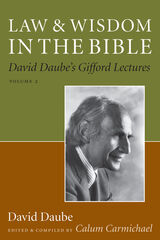 Law and Wisdom in the Bible: David Daube's Gifford Lectures, Volume II
David Daube
Templeton Press, 2010 "That over forty years after they were delivered these famous but unavailable Gifford Lectures should be published is occasion for celebration. Once again we hear Daube’s voice, patient and probing, as he turns over, tests, pushes fresh inquiries, and finds new insights. No man has had such a subtle sense of scriptural texts matched by such a supple sense of the practices and peculiarities of human beings engaged in the legal process. Law and Wisdom in the Bible is classic Daube." mdash;John T. Noonan Jr., United States Circuit Judge David Daube (1909–99) was known for his unique and sophisticated research on Roman law, biblical law, Jewish Law, and medical ethics. In Law and Wisdom in the Bible, the first published collection of his 1964 Gifford Lectures, Daube derives from his complex understanding of biblical texts both ancient and contemporary notions about wisdom, justice, and education. In addressing these and other profound issues, Daube crosses traditional disciplinary boundaries and bridges the
gap between humanism and religion, especially with regard to Christianity and Judaism. With his sophisticated understanding of Talmudic law and literature, his thinking, which is on full display in these lectures, revolutionized prevailing perceptions about the New Testament.
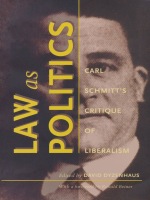 Law as Politics: Carl Schmitt’s Critique of Liberalism
David Dyzenhaus, ed.
Duke University Press, 1998 While antiliberal legal theorist Carl Schmitt has long been considered by Europeans to be one of this century’s most significant political philosophers, recent challenges to the fundamental values of liberal democracies have made Schmitt’s writings an unavoidable subject of debate in North America as well. In an effort to advance our understanding not only of Schmitt but of current problems of liberal democracy, David Dyzenhaus presents translations of classic German essays on Schmitt alongside more recent writings by distinguished political theorists and jurists. Neither a defense of nor an attack on Schmitt, Law as Politics offers the first balanced response to his powerful critique of liberalism. One of the major players in the 1920s debates, an outspoken critic of the Versailles Treaty and the Weimar Constitution, and a member of the Nazi party who provided juridical respectability to Hitler’s policies, Schmitt contended that people are a polity only to the extent that they share common enemies. He saw the liberal notion of a peaceful world of universal citizens as a sheer impossibility and attributed the problems of Weimar to liberalism and its inability to cope with pluralism and political conflict. In the decade since his death, Schmitt’s writings have been taken up by both the right and the left and scholars differ greatly in their evaluation of Schmitt’s ideas. Law as Politics thematically organizes in one volume the varying engagements and confrontations with Schmitt’s work and allows scholars to acknowledge—and therefore be in a better position to negotiate—an important paradox inscribed in the very nature of liberal democracy. Law as Politics will interest political philosophers, legal theorists, historians, and anyone interested in Schmitt’s relevance to current discussions of liberalism. Contributors. Heiner Bielefeldt, Ronald Beiner, Ernst-Wolfgang Bockenforde, Renato Cristi, David Dyzenhaus, Robert Howse, Ellen Kennedy, Dominique Leydet, Ingeborg Maus, John P. McCormick, Reinhard Mehring, Chantal Mouffe, William E. Scheuerman, Jeffrey Seitzer
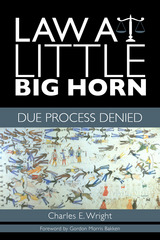 Law at Little Big Horn: Due Process Denied
Charles E. Wright
Texas Tech University Press, 2016 During the nineteenth century, the rights of American Indians were frequently violated by the president and ignored or denied enforcement by federal courts. However, at times Congress treated the Indians with good faith and honored due process, which prohibits the government from robbing any person of life, liberty, or property without a fair hearing before an impartial judge or jury. These due process requirements protect all Americans and were in effect when President Grant launched the Great Sioux War in 1876—without a formal declaration of war by Congress.
Charles E. Wright analyzes the legal backdrop to the Great Sioux War, asking the hard questions of how treaties were to be honored and how the US government failed to abide by its sovereign word. Until now, little attention has been focused on how the events leading up to and during the Battle of Little Big Horn violated American law. While other authors have analyzed George Armstrong Custer’s tactics and equipment, Wright is the first to investigate the legal and constitutional issues surrounding the United States’ campaign against the American Indians.
This is not just another Custer book. Its contents will surprise even the most accomplished Little Big Horn scholar.
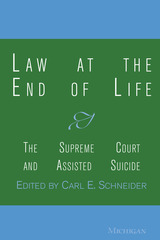 Law at the End of Life: The Supreme Court and Assisted Suicide
Carl E. Schneider, Editor
University of Michigan Press, 2000 We live in a world in which courts crucially shape public policy through constitutional adjudication. This is a book written for that world. It brings together a group of distinguished scholars from many disciplines to examine the Supreme Court's recent decision that statutes prohibiting doctors from helping their patients commit suicide may be constitutional. It offers a guide to that decision and to the larger issues it raises for citizens and scholars alike.Law at the End of Life asks everyone's first question: What does the decision mean for today and tomorrow? It asks the lawyer's question: Is the Supreme Court's reasoning clear and convincing? It asks the doctor's question: How will the decision affect the decisions physicians make with their patients? It asks the ethicist's question: Will the decision conduce to wise and just decisions at the end of life? It asks the historian's question: How are we to understand the Court's work in light of our disturbing national experience with euthanasia?Ultimately, it asks the questions citizens need to ask in our new world: Is constitutional adjudication a good way to make public policy? Are courts well equipped -- with experience, with doctrine, with wisdom -- to make good policy? What role should courts have in making policy in a democracy? Has the Supreme Court made good public policy? What is the right policy for law at the end of life?The contributors are Howard Brody, Rebecca Dresser, Arthur W. Frank, Peter J. Hammer, Yale Kamisar, Cristopher McCrudden, Martin S. Pernick, and Sonia M. Suter.
Law Beyond the State: Pasts and Futures
Edited by Rainer Hofmann and Stefan Kadelbach
Campus Verlag, 2016 Law beyond the State brings together contributions by renowned experts on international and European Union law to celebrate the centennial of Goethe‒Universität Frankfurt. The essays explore Frankfurt’s contribution to the development of international law; the historical development of international law; how this form of law can be used as a tool to improve the world and create a better future for all; the essential relevance of the spiritual dimension of legal orders, including the European Union, to ensuring their values will be taken seriously; and the possibility, offered by the Internet, for all persons concerned with global lawmaking to participate effectively in relevant decision-making processes.
Law by Night
Jonathan Goldberg-Hiller
Duke University Press, 2023 In Law by Night Jonathan Goldberg-Hiller asks what we can learn about modern law and its authority by understanding how it operates in the dark of night. He outlines how the social experience and cultural meanings of night promote racialized and gender violence, but also make possible freedom of movement for marginalized groups that might be otherwise unavailable during the day. Examining nighttime racial violence, curfews, gun ownership, the right to sleep, and “take back the night” rallies, Goldberg-Hiller demonstrates that liberal legal doctrine lacks a theory of the night that accounts for a nocturnal politics that has historically allowed violence to persist. By locating the law’s nocturnal limits, Goldberg-Hiller enriches understandings of how the law reinforces hierarchies of race and gender and foregrounds the night’s potential to enliven a more egalitarian social life.
 The Law Code of Viṣṇu: A Critical Edition and Annotated Translation of the Vaiṣṇava-Dharmaśāstra
Patrick Olivelle
Harvard University Press The Law Code of Viṣṇu (Vaiṣṇava-Dharmaśāstra) is one of the latest of the ancient Indian legal texts composed around the seventh century CE in Kashmir. Both because the Vaiṣṇava-Dharmaśāstra is the only Dharmaśāstra that can be geographically located and because it introduces some interesting and new elements into the discussion of Dharmaśāstric topics, this is a document of interest both to scholars of Indian legal literature and to cultural historians of India, especially of Kashmir. The new elements include the first Dharmaśāstric evidence for a wife burning herself at her husband’s cremation and the intrusion of devotional religion (bhakti) into Dharmaśāstras.
This volume contains a critical edition of the Sanskrit text based on fifteen manuscripts, an annotated English translation, and an introduction evaluating its textual history, its connections to previous Dharmaśāstras, its date and provenance, its structure and content, and the use made of it by later medieval writers.
 Law Collections from Mesopotamia and Asia Minor
Martha T. Roth
SBL Press, 1997 The law collections presented in this volume are compilations, varying in legal and literary sophistication, recorded by scribes in the schools and the royal centers of ancient Mesopotamia and Asia Minor from the end of the third millennium through the middle of the first millennium BCE. Sumerian, Babylonian, Assyrian, and Hittite texts, with accompanying English translations, are included. Some of the collections, such as the famous Laws of Hammurabi, achieved a wide audience; others, such as the Laws about Rented Oxen, were scribal exercises limited to a local school center. All, however, reflected contemporary legal practice in the scribes’ recordings of contracts, administrative documents, and court cases and also provide historians with evidence of abstractions of legal rules from specific cases. In addition to the texts and translations, the volume includes a list of sources, bibliography, glossary, and numerous indexes.
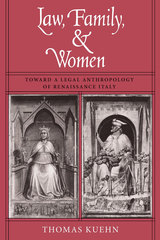 Law, Family, and Women: Toward a Legal Anthropology of Renaissance Italy
Thomas Kuehn
University of Chicago Press, 1991 Focusing on Florence, Thomas Kuehn demonstrates the formative
influence of law on Italian society during the Renaissance,
especially in the spheres of family and women. Kuehn's use
of legal sources along with letters, diaries, and
contemporary accounts allows him to present a compelling
image of the social processes that affected the shape and
function of the law.
The numerous law courts of Italian city-states
constantly devised and revised statutes. Kuehn traces the
permutations of these laws, then examines their use by
Florentines to arbitrate conflict and regulate social
behavior regarding such issues as kinship, marriage,
business, inheritance, illlegitimacy, and gender. Ranging
from one man's embittered denunciation of his father to
another's reaction to his kinsmen's rejection of him as
illegitimate, Law, Family, and Women provides
fascinating evidence of the tensions riddling family life in
Renaissance Florence. Kuehn shows how these same tensions,
often articulated in and through the law, affected women. He
examines the role of the mundualdus—a male legal guardian
for women—in Florence, the control of fathers over their
married daughters, and issues of inheritance by and through
women. An ambitious attempt to reformulate the agenda of
Renaissance social history, Kuehn's work will be of value to
both legal anthropologists and social historians.
Thomas Kuehn is professor of history at Clemson
University.
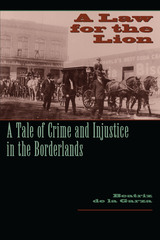 A Law for the Lion: A Tale of Crime and Injustice in the Borderlands
By Beatriz de la Garza
University of Texas Press, 2003 "Esto no es cosa de armas" (this is not a matter for weapons). These were the last words of Don Francisco Gutiérrez before Alonzo W. Allee shot and killed him and his son, Manuel Gutiérrez. What began as a simple dispute over Allee's unauthorized tenancy on a Gutiérrez family ranch near Laredo, Texas, led not only to the slaying of these two prominent Mexican landowners but also to a blatant miscarriage of justice. In this engrossing account of the 1912 crime and the subsequent trial of Allee, Beatriz de la Garza delves into the political, ethnic, and cultural worlds of the Texas-Mexico border to expose the tensions between the Anglo minority and the Mexican majority that propelled the killings and their aftermath. Drawing on original sources, she uncovers how influential Anglos financed a first-class legal team for Allee's defense and also discusses how Anglo-owned newspapers helped shape public opinion in Allee's favor. In telling the story of this long-ago crime and its tragic results, de la Garza sheds new light on the interethnic struggles that defined life on the border a century ago, on the mystique of the Texas Rangers (Allee was said to be a Ranger), and on the legal framework that once institutionalized violence and lawlessness in Texas.
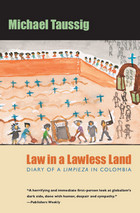 Law in a Lawless Land: Diary of a Limpieza in Colombia
Michael Taussig
University of Chicago Press, 2005 A modern nation in a state of total disorder, Colombia is an international flashpoint—wracked by more than half a century of civil war, political conflict, and drug-trade related violence—despite a multibillion dollar American commitment that makes it the third-largest recipient of U.S. foreign aid.
Law in a Lawless Land offers a rare and penetrating insight into the nature of Colombia's present peril. In a nuanced account of the human consequences of a disintegrating state, anthropologist Michael Taussig chronicles two weeks in a small town in Colombia's Cauca Valley taken over by paramilitaries that brazenly assassinate adolescent gang members. Armed with automatic weapons and computer-generated lists of names and photographs, the paramilitaries have the tacit support of the police and even many of the desperate townspeople, who are seeking any solution to the crushing uncertainty of violence in their lives. Concentrating on everyday experience, Taussig forces readers to confront a kind of terror to which they have become numb and complacent.
"If you want to know what it is like to live in a country where the state has disintegrated, this moving book by an anthropologist well known for his writings on murderous Colombia will tell you."—Eric Hobsbawm
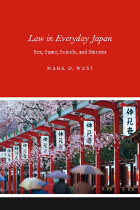 Law in Everyday Japan: Sex, Sumo, Suicide, and Statutes
Mark D. West
University of Chicago Press, 2005 Lawsuits are rare events in most people's lives. High-stakes cases are even less commonplace. Why is it, then, that scholarship about the Japanese legal system has focused almost exclusively on epic court battles, large-scale social issues, and corporate governance? Mark D. West's Law in Everyday Japan fills a void in our understanding of the relationship between law and social life in Japan by shifting the focus to cases more representative of everyday Japanese life.
Compiling case studies based on seven fascinating themes—karaoke-based noise complaints, sumo wrestling, love hotels, post-Kobe earthquake condominium reconstruction, lost-and-found outcomes, working hours, and debt-induced suicide—Law in Everyday Japan offers a vibrant portrait of the way law intermingles with social norms, historically ingrained ideas, and cultural mores in Japan. Each example is informed by extensive fieldwork. West interviews all of the participants-from judges and lawyers to defendants, plaintiffs, and their families-to uncover an everyday Japan where law matters, albeit in very surprising ways.
 Law in Everyday Life
Austin Sarat and Thomas R. Kearns, Editors
University of Michigan Press, 1995 "Sarat and Kearns . . . have edited a truly marvelous work on the impact of the law on daily life and vice versa. . . . the essays are all exemplary, thought- provoking works worthy of a long, contemplative read by scholars, lawyers, and judges alike." --Choice
"The subject of law in everyday life is timely in theory and in practice. The essays collected here are stimulating for the very different ways in which they reconfigure the meanings of 'the law' as cultural practice, and 'the everyday' as a cultural domain in which the state expresses a range of interests and engagements. Readers looking for an introduction to this topic will come away from the book with a clear sense of the varied voices and modes of inquiry now involved in sociolegal studies, and what distinguishes them. More experienced readers will appreciate the book's meticulous reconsideration of the instrumentalities, agencies, and constructedness of law." --Carol Greenhouse, Indiana University
Contributors include David Engel, Hendrik Hartog, Thomas R. Kearns, David Kennedy, Catharine MacKinnon, George Marcus, Austin Sarat, and Patricia Williams.
Austin Sarat is William Nelson Cromwell Professor of Jurisprudence and Political Science, and Chair of the Department of Law, Jurisprudence, and Social Thought, Amherst College. Thomas R. Kearns is William H. Hastie Professor of Philosophy and Professor of Law, Jurisprudence, and Social Thought, Amherst College.
 Law in Film: RESONANCE AND REPRESENTATION
David A. Black
University of Illinois Press, 1999 The courtroom, like the movie theater, is an arena for the telling and interpreting of stories. Investigators piece them together, witnesses tell them, advocates retell them, and judges and juries assess their plausibility. These narratives reconstitute absent events through words, and their filming constitutes a double narrative: one important cultural practice rendered in the terms of another.
Drawing on both film studies and legal scholarship, David A. Black explores the implications of representing court procedure, as well as other phases of legal process, in film. His study ranges from an inquiry into the common metaphorical ground between film and law, explored through "the detective" and "the witness," to a critical survey of legal writings about the cinema, to close analyses of key films about law. In examining multiple aspects of law in film, Black sustains a focus on the central importance of narrative while also unearthing the influences—pleasure in film, power in law—that lie beyond the narrative realm. Black's penetrating study treats questions of narrative authority and structure, social authority, and cultural history, revealing the underlying historical, cultural, and cognitive connections between legal and cinematic practices.
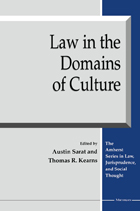 Law in the Domains of Culture
Austin Sarat and Thomas R. Kearns, Editors
University of Michigan Press, 2000 The concept of culture is troublingly vague and, at the same time, hotly contested, and law's relations to culture are as complex, varied and disputed as the concept of culture itself. The concept of the traditional, unified, reified, civilizing idea of culture has come under attack. The growth of cultural studies has played an important role in redefining culture by including popular culture and questions of social stratification, power and social conflict.
Law and legal studies are relative latecomers to cultural studies. As scholars have come to see law as not something apart from culture and society, they have begun to explore the connections between law and culture. Focusing on the production, interpretation, consumption and circulation of legal meaning, these scholars suggest that law is inseparable from the interests, goals and understandings that deeply shape or compromise social life. Against this background, Law in the Domains of Culture brings the insights and approaches of cultural studies to law and tries to secure for law a place in cultural analysis. This book provides a sampling of significant theoretical issues in the cultural analysis of law and illustrates some of those issues in provocative examples of the genre. Law in the Domains of Culture is designed to encourage the still tentative efforts to forge a new interdisciplinary synthesis, cultural studies of law.
The contributors are Carol Clover, Rosemary Coombe, Marjorie Garber, Thomas R. Kearns, William Miller, Andrew Ross, Austin Sarat, and Martha Woodmansee.
Austin Sarat is William Nelson Cromwell Professor of Jurisprudence and Political Science, Amherst College. Thomas R. Kearns is William H. Hastie Professor of Philosophy, Amherst College.
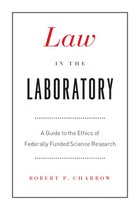 Law in the Laboratory: A Guide to the Ethics of Federally Funded Science Research
Robert P. Charrow
University of Chicago Press, 2010 The National Institutes of Health and the National Science Foundation together fund more than $40 billon of research annually in the United States and around the globe. These large public expenditures come with strings, including a complex set of laws and guidelines that regulate how scientists may use NIH and NSF funds, how federally funded research may be conducted, and who may have access to or own the product of the research. Until now, researchers have had little instruction on the nature of these laws and how they work. But now, with Robert P. Charrow’s Law in the Laboratory, they have a readable and entertaining introduction to the major ethical and legal considerations pertaining to research under the aegis of federal science funding. For any academic whose position is grant funded, or for any faculty involved in securing grants, this book will be an essential reference manual. And for those who want to learn how federal legislation and regulations affect laboratory research, Charrow’s primer will shed light on the often obscured intersection of government and science.
 Law, Intellect, and Education
Francis A. Allen
University of Michigan Press, 1979 In Law, Intellect, and Education, Francis A. Allen presents a compelling collection of essays that argue for an education system grounded in intellectual rigor and humanistic motivation. Spanning nearly thirty years, these essays collectively defend the importance of a liberal and professional education that is under threat in the modern world. Allen, drawing from his extensive involvement with the Association of American Law Schools, underscores the need to advocate for this education, asserting its critical role in developing thoughtful and rational legal minds. The book delves into key themes in essays like "Mr. Justice Holmes and 'The Life of the Mind'," which critiques the separation of legal theory from moral considerations, and "On Winning and Losing," which examines the cultural fixation on success within the legal profession. Allen also reflects on past legal thought, such as Jerome Frank's "Law and the Modern Mind," to address the continuing relevance of recognizing human limitations in judicial processes. Throughout, Allen calls for a renewed commitment to cultivating intellectual discipline, emphasizing its necessity in achieving justice and fulfilling the demands of a complex legal system.
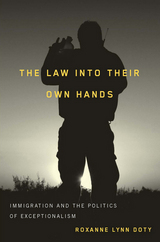 The Law Into Their Own Hands: Immigration and the Politics of Exceptionalism
Roxanne Lynn Doty
University of Arizona Press, 2009 Border security and illegal immigration along the U.S.–Mexico border are hotly debated issues in contemporary society. The emergence of civilian vigilante groups, such as the Minutemen, at the border is the most recent social phenomenon to contribute new controversy to the discussion. The Law Into Their Own Hands looks at the contemporary nativist, anti-immigrant movement in the United States today.
Doty examines the social and political contexts that have enabled these civilian groups to flourish and gain legitimacy amongst policy makers and the public. The sentiments underlying the vigilante movement both draw upon and are channeled through a diverse range of organizations whose messages are often reinforced by the media. Taking action when they believe official policy is lacking, groups ranging from elements of the religious right to anti-immigrant groups to white supremacists have created a social movement.
Doty seeks to alert us to the consequences related to this growing movement and to the restructuring of our society. She maintains that with immigrants being considered as enemies and denied basic human rights, it is irresponsible of both citizens and policy makers to treat this complicated issue as a simple black or white reality.
In this solid and theoretically grounded look at contemporary, post-9/11 border vigilantism, the author observes the dangerous and unproductive manner in which private citizens seek to draw firm and uncompromising lines between who is worthy of inclusion in our society and who is not.
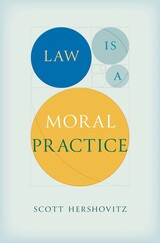 Law Is a Moral Practice
Scott Hershovitz
Harvard University Press, 2023 A powerful argument for the essential role of morality in law, getting at the heart of key debates in public life.
What is law? And how does it relate to morality? It’s common to think that law and morality are different ways of regulating our lives. But Scott Hershovitz says that this is a mistake: law is a part of our moral lives. It’s a tool we use to adjust our moral relationships. The legal claims we advance in court, Hershovitz argues, are moral claims. And our legal conflicts are moral conflicts.
Law Is a Moral Practice supplies fresh answers to fundamental questions about the nature of law and helps us better appreciate why we disagree about law so deeply. Reviving a neglected tradition of legal thought most famously associated with Ronald Dworkin, Hershovitz engages with important legal and political controversies of our time, including recent debates about constitutional interpretation and the obligations of citizens and officials to obey the law.
Leavened by entertaining personal stories, guided by curiosity rather than ideology, moving beyond entrenched dichotomies like the opposition between positivism and natural law, Law Is a Moral Practice is a thought-provoking investigation of the philosophical issues behind real-world legal debates.
Law, Legislation and Liberty, Volume 1: Rules and Order
F. A. Hayek
University of Chicago Press, 1978 This volume represents the first section of F. A. Hayek's comprehensive three-part study of the relations between law and liberty. Rules and Order constructs the framework necessary for a critical analysis of prevailing theories of justice and of the conditions which a constitution securing personal liberty would have to satisfy.
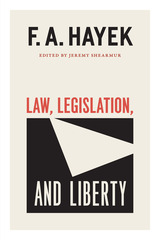 Law, Legislation, and Liberty, Volume 19
F. A. Hayek
University of Chicago Press, 2021 A new edition of F. A. Hayek’s three-part opus Law, Legislation, and Liberty, collated in a single volume
In this critical entry in the University of Chicago’s Collected Works of F. A. Hayek series, political philosopher Jeremy Shearmur collates Hayek’s three-part study of law and liberty and places Hayek’s writings in careful historical context. Incisive and unrestrained, Law, Legislation, and Liberty is Hayek at his late-life best, making it essential reading for understanding the philosopher’s politics and worldview.
These three volumes constitute a scaling up of the framework offered in Hayek’s famed The Road to Serfdom. Volume 1, Rules and Order, espouses the virtues of classical liberalism; Volume 2, The Mirage of Social Justice, examines the societal forces that undermine liberalism and, with it, liberalism’s capacity to induce “spontaneous order”; and Volume 3, The Political Order of a Free People, proposes alternatives and interventions against emerging anti-liberal movements, including a rule of law that resides in stasis with personal freedom.
Shearmur’s treatment of this challenging work—including an immersive new introduction, a conversion of Hayek’s copious endnotes to footnotes, corrections to Hayek’s references and quotations, and the provision of translations to material that Hayek cited only in languages other than English—lends it new importance and accessibility. Rendered anew for the next generations of scholars, this revision of Hayek’s Law, Legislation, and Liberty is sure to become the standard.
Law, Legislation and Liberty, Volume 2: The Mirage of Social Justice
F. A. Hayek
University of Chicago Press, 1977 F. A. Hayek made many valuable contributions to the field of economics as well as to the disciplines of philosophy and politics. This volume represents the second of Hayek's comprehensive three-part study of the relations between law and liberty. Here, Hayek expounds his conviction that he continued unexamined pursuit of "social justice" will contribute to the erosion of personal liberties and encourage the advent of totalitarianism.
Law, Legislation and Liberty, Volume 3: The Political Order of a Free People
F. A. Hayek
University of Chicago Press, 1981 Incisive, straightforward, and eloquent, this third and concluding volume of F. A. Hayek's comprehensive assessment of the basic political principles which order and sustain free societies contains the clearest and most uncompromising exposition of the political philosophy of one of the world's foremost economists.
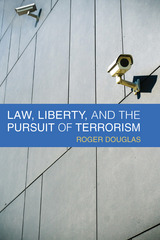 Law, Liberty, and the Pursuit of Terrorism
Roger Douglas
University of Michigan Press, 2014 Roger Douglas compares responses to terrorism by five liberal democracies—the United States, the United Kingdom, Canada, Australia, and New Zealand—over the past 15 years. He examines each nation’s development and implementation of counterterrorism law, specifically in the areas of information-gathering, the definition of terrorist offenses, due process for the accused, detention, and torture and other forms of coercive questioning. Douglas finds that terrorist attacks elicit pressures for quick responses, often allowing national governments to accrue additional powers. But emergencies are neither a necessary nor a sufficient condition for such laws, which may persist even after fears have eased. He argues that responses are influenced by both institutional interests and prior beliefs, and complicated when the exigencies of office and beliefs point in different directions. He also argues that citizens are wary of government’s impingement on civil liberties and that courts exercise their capacity to restrain the legislative and executive branches. Douglas concludes that the worst antiterror excesses have taken place outside of the law rather than within, and that the legacy of 9/11 includes both laws that expand government powers and judicial decisions that limit those very powers.
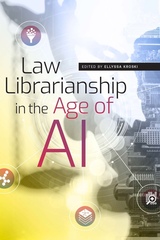 Law Librarianship in the Age of AI
Ellyssa Kroski
American Library Association, 2019 Winner of the 2020 Joseph L. Andrews Legal Literature Award by the American Association of Law Libraries (AALL) Futurists predict that in the next ten years the profession of “lawyer” will splinter into job titles like “legal process analyst” or “legal knowledge engineer.” And some in the field are already taking a proactive approach — in fact, more than two dozen law schools have developed innovation centers to explore artificial intelligence (AI) and the law. In a competitive marketplace, both firms and individuals need to familiarize themselves with the dazzling array of new products and enhanced features capable of improving efficiency. Written by leading practitioners and visionaries like Robert Ambrogi, this groundbreaking survey of current practices and future trends offers an incisive examination of the evolving roles for law librarians. Readers will learn how AI technology is changing law school curricula, lawyer practice, marketing, and other key aspects of the field through coverage of such topics as - the benefits of AI to law librarianship, including areas like legal research, contract review, compliance, and administration, and their associated risks;
- four professional ethics rules that apply to the use or (non-use) of AI;
- how lawyers and staff work side by side with AI, utilizing intelligence like RAVN ACE or FastCase to attack the drudgery of due diligence and document review;
- surprising machine-learning insights from tokenizing, stemming, and lemmatizing the text of Shakespeare’s plays;
- the potential for chatbots and new natural language processing products to improve access to justice; and
- ways to develop sought-after skills through new technology departments, practice management groups, and legal innovation labs.
Reading this collection will give you a firm grasp of the innovations, tools, benefits, and risks of AI in law librarianship.
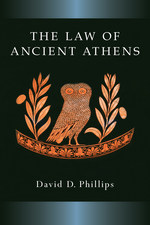 The Law of Ancient Athens
David D. Phillips
University of Michigan Press, 2013 The Law of Ancient Athens contains the principal literary and epigraphical sources, in English, for Athenian law in the Archaic and Classical periods, from the first known historical trial (late seventh century) to the fall of the democracy in 322 BCE. This accessible and important volume is designed for teachers, students, and general readers interested in the ancient Greek world, the history of law, and the history of democracy, an Athenian invention during this period. Offering a comprehensive treatment of Athenian law, it assumes no prior knowledge of the subject and is organized in user-friendly fashion, progressing from the person to the family to property and obligations to the gods and to the state. David D. Phillips has translated all sources into English, and he has added significant introductory and explanatory material. Topics covered in the book include homicide and wounding; theft; marriage, children, and inheritance; citizenship; contracts and commerce; impiety; treason and other offenses against the state; and sexual offenses including rape and prostitution. The volume’s unique feature is its presentation of the actual primary sources for Athenian laws, with many key or disputed terms rendered in transliterated Greek. The translated sources, together with the topical introductions, notes, and references, will facilitate both research in the field and the teaching of increasingly popular courses on Athenian law and law in the ancient world.
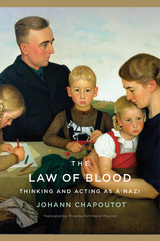 The Law of Blood: Thinking and Acting as a Nazi
Johann Chapoutot
Harvard University Press, 2018 Winner of the Yad Vashem International Book Prize for Holocaust Research
The scale and the depth of Nazi brutality seem to defy understanding. What could drive people to fight, kill, and destroy with such ruthless ambition? Observers and historians have offered countless explanations since the 1930s. According to Johann Chapoutot, we need to understand better how the Nazis explained it themselves. We need a clearer view, in particular, of how they were steeped in and spread the idea that history gave them no choice: it was either kill or die.
Chapoutot, one of France’s leading historians, spent years immersing himself in the texts and images that reflected and shaped the mental world of Nazi ideologues, and that the Nazis disseminated to the German public. The party had no official ur-text of ideology, values, and history. But a clear narrative emerges from the myriad works of intellectuals, apparatchiks, journalists, and movie-makers that Chapoutot explores.
The story went like this: In the ancient world, the Nordic-German race lived in harmony with the laws of nature. But since Late Antiquity, corrupt foreign norms and values—Jewish values in particular—had alienated Germany from itself and from all that was natural. The time had come, under the Nazis, to return to the fundamental law of blood. Germany must fight, conquer, and procreate, or perish. History did not concern itself with right and wrong, only brute necessity. A remarkable work of scholarship and insight, The Law of Blood recreates the chilling ideas and outlook that would cost millions their lives.
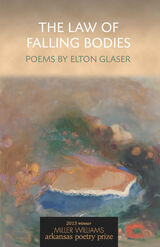 The Law of Falling Bodies: Poems
Elton Glaser
University of Arkansas Press, 2013 The hard center of The Law of Falling Bodies bears down on the twin enmities of pain and loss. But the book ranges over a broad field, with poems covering everything from the inundations of summer rain ("It's like living in the spit valve of a big trombone") to a lovesick drunk listening to Patsy Cline ("My drink's on the rocks, and I am, too.") Glaser begins with the quirks and revelations of nature, shifts to those difficult adjustments we make as the body breaks down, modulates to a series of scenes imbued with music, and ends on an elegiac note in memory of his late wife ("Grief follows me like a dog behind the butcher's truck"). Along the way, the poems touch on a restless scale of tones, as light as the indignant comedy of "It Ain't the Heat, It's the Stupidity" and as heartbreakingly dark as "Autopsy." At the core is the constant interplay of an agile mind and rich language--what Ezra Pound called "the dance of the intellect among words"--always feeling out what it is to be human. The Law of Falling Bodies is part of the University of Arkansas Press Poetry series, edited by Enid Shomer.
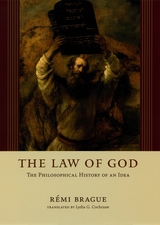 The Law of God: The Philosophical History of an Idea
Rémi Brague
University of Chicago Press, 2007 The law of God: these words conjure an image of Moses breaking the tablets at Mount Sinai, but the history of the alliance between law and divinity is so much longer, and its scope so much broader, than a single Judeo-Christian scene can possibly suggest. In his stunningly ambitious new history, Rémi Brague goes back three thousand years to trace this idea of divine law in the West from prehistoric religions to modern times—giving new depth to today’s discussions about the role of God in worldly affairs.
Brague masterfully describes the differing conceptions of divine law in Judaic, Islamic, and Christian traditions and illuminates these ideas with a wide range of philosophical, political, and religious sources. In conclusion, he addresses the recent break in the alliance between law and divinity—when modern societies, far from connecting the two, started to think of law simply as the rule human community gives itself. Exploring what this disconnection means for the contemporary world, Brague—powerfully expanding on the project he began with The Wisdom of the World—re-engages readers in a millennia-long intellectual tradition, ultimately arriving at a better comprehension of our own modernity.
“Brague’s sense of intellectual adventure is what makes his work genuinely exciting to read. The Law of God offers a challenge that anyone concerned with today’s religious struggles ought to take up.”—Adam Kirsch, New York Sun “Scholars and students of contemporary world events, to the extent that these may be viewed as a clash of rival fundamentalisms, will have much to gain from Brague’s study. Ideally, in that case, the book seems to be both an obvious primer and launching pad for further scholarship.”—Times Higher Education Supplement
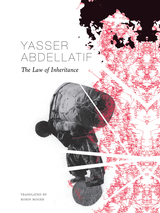 The Law of Inheritance
Yasser Abdellatif
Seagull Books, 2018 This lyrical novel tells the story of a young man living in Egypt in the 1990s, a time of great turmoil. We see student riots at Cairo University, radical politics, and the first steps towards the making of a writer. But his story is not told in isolation: through his experiences and memories Yasser Abdellatif also unfolds the experiences of his Nubian family through the epochal changes the country underwent in the twentieth-century.
The symphonic four-part text presents us with narratives of Egyptian identity, a constant knitting and unravelling that moves us back and forth through time, as the reader slides and leaps across the shifting tectonic plates of Abdellatif’s vignettes, his immaculately limpid prose poetry bringing forth the same questions. Nobody quite belongs in Cairo, it seems, but at the same time none of them belongs anywhere else: a relative emigrates from his Nubian village to the Cairo of the 1930s, where Italian fascists chase him through the streets and into a Maltese exile, only for him to return and make his way back South to the homeland he left. Another relative falls into religious esotericism and later madness, spinning away from Cairo and back to the wasteland of a village relocated after it had been flooded by the Aswan Dam. Meanwhile, in the 1990s, students fight security forces and binge on pills amid the dysfunctional remnants of a centralized state whose gravitational pull uprooted their parents and offered the possibility of assimilation into a national identity.
Through the clear sky of Abdellatif’s novel his characters, the spaces they call home, their way-stations, and even the nation that contains them all are a murmuration of starlings, held together and apart forever.
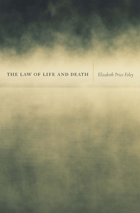 The Law of Life and Death
Elizabeth Price Foley
Harvard University Press, 2011 Are you alive? What makes you so sure? Most people believe this question has a clear answer—that some law defines our status as living (or not) for all purposes. But they are dead wrong. In this pioneering study, Elizabeth Price Foley examines the many, and surprisingly ambiguous, legal definitions of what counts as human life and death.
Foley reveals that “not being dead” is not necessarily the same as being alive, in the eyes of the law. People, pre-viable fetuses, and post-viable fetuses have different sets of legal rights, which explains the law's seemingly inconsistent approach to stem cell research, in vitro fertilization, frozen embryos, in utero embryos, contraception, abortion, homicide, and wrongful death.
In a detailed analysis that is sure to be controversial, Foley shows how the need for more organ transplants and the need to conserve health care resources are exerting steady pressure to expand the legal definition of death. As a result, death is being declared faster than ever before. The "right to die," Foley worries, may be morphing slowly into an obligation to die.
Foley’s balanced, accessible chapters explore the most contentious legal issues of our time—including cryogenics, feticide, abortion, physician-assisted suicide, brain death, vegetative and minimally conscious states, informed consent, and advance directives—across constitutional, contract, tort, property, and criminal law. Ultimately, she suggests, the inconsistencies and ambiguities in U.S. laws governing life and death may be culturally, and perhaps even psychologically, necessary for an enormous and diverse country like ours.
The Law of Love: From Autonomy to Communion
Stephen F. Brett, SSJ
University of Scranton Press, 2010 With an interdisciplinary combination of philosophy, theology, and family law, The Law of Love explores the impact of secular conceptions of autonomy on sexuality and family. Drawing from the thought of Aristotle, Cicero, Augustine, Aquinas, and the modern theologian Servais Pinckaers, Stephen F. Brett argues that the divorce of freedom from virtue has caused cultural relativism, and that a potent and healthy mix of temperance, chastity, and modesty is the antidote. Styled accessibly and quite cleverly with a broader audience in mind, The Law of Love will appeal to intellectuals of all faiths who are interested in facing the ambiguities and problems of contemporary life in a secularized society.
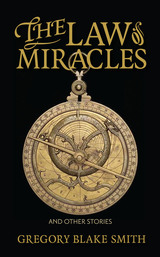 The Law of Miracles: And Other Stories
Gregory Blake Smith
University of Massachusetts Press, 2011 These stories take place in the space where the rational and irrational intersect—the space governed by The Law of Miracles. Writing with a remarkable range of invention, Gregory Blake Smith has created a world in which his characters navigate between the everyday and the extraordinary: an aged Russian woman who lives simultaneously in the St. Petersburg of iPods and BMWs and in the starving Leningrad of the Siege; a Venetian art conservator who loves the women of the Renaissance paintings he restores but cannot bear the touch of the woman at his side; a down-and-out slot-machine technician who calculates the probability of his wife's dying. Yet for all their variety of setting and subject, there runs through each of these stories a thread of the miraculous, a suspicion that the transcendent lies just at the edge of perception. We watch the characters of The Law of Miracles struggle toward that transcendence, whether it be through love or art or violence, until we as readers feel—like the main character of the Pushcart Prize–winning "Presently in Ruins"—that if we could only parse the seemingly random details of our existence some new pattern of meaning would emerge, some new magic that would transform our lives.
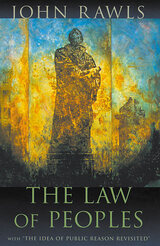 The Law of Peoples: With “The Idea of Public Reason Revisited”
John Rawls
Harvard University Press, 2001 This book consists of two parts: “The Law of Peoples,” a major reworking of a much shorter article by the same name published in 1993, and the essay “The Idea of Public Reason Revisited,” first published in 1997. Taken together, they are the culmination of more than fifty years of reflection on liberalism and on some of the most pressing problems of our times by John Rawls.
“The Law of Peoples” extends the idea of a social contract to the Society of Peoples and lays out the general principles that can and should be accepted by both liberal and non-liberal societies as the standard for regulating their behavior toward one another. In particular, it draws a crucial distinction between basic human rights and the rights of each citizen of a liberal constitutional democracy. It explores the terms under which such a society may appropriately wage war against an “outlaw society” and discusses the moral grounds for rendering assistance to non-liberal societies burdened by unfavorable political and economic conditions.
“The Idea of Public Reason Revisited” explains why the constraints of public reason, a concept first discussed in Political Liberalism (1993), are ones that holders of both religious and non-religious comprehensive views can reasonably endorse. It is Rawls’s most detailed account of how a modern constitutional democracy, based on a liberal political conception, could and would be viewed as legitimate by reasonable citizens who on religious, philosophical, or moral grounds do not themselves accept a liberal comprehensive doctrine—such as that of Kant, or Mill, or Rawls’s own “Justice as Fairness,” presented in A Theory of Justice (1971).
 The Law of Primitive Man: A Study in Comparative Legal Dynamics
E. Adamson Hoebel
Harvard University Press, 1954 A classic work in the anthropology of law, this book offered one of the first ambitiously conceived analyses of the fundamental rights and duties that are treated as law among nonliterate peoples (labeled "primitive" at the time of the original publication). The heart of the book is a description and analysis of the law of five societies: the Eskimo; the Ifugao of northern Luzon in the Philippines; the Comanche, Kiowa, and Cheyenne tribes of the western plains of the United States; the Trobriand Islanders of the southwest Pacific; and the Ashanti of western Africa. Hoebel's lucid analysis reveals the variety and complexity of these societies' political and legal institutions. It emphasizes their use of due process in adjudication and enforcement and highlights the importance of general explicit standards of conduct in these societies. In offering these detailed case studies of societies studied by other anthropologists, and in outlining an influential approach to the subject, it remains an illuminating book for both scholars and students.
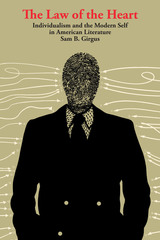 The Law of the Heart: Individualism and the Modern Self in American Literature
By Sam B. Girgus
University of Texas Press, 1979 The Law of the Heart is a vigorous challenge to the prevailing concept of the “antidemocratic” image of the self in the American literary and cultural tradition. Sam B. Girgus counters this interpretation and attempts to develop a new understanding of democratic individualism and liberal humanism in American literature under the rubric of literary modernism. The image of the individual self who retreats inward, conforming to a distorted “law of the heart,” emerges from the works of such writers as Cooper and Poe and composer Charles Ives. Yet, as Girgus shows, other American writers relate the idea of the self to reality and culture in a more complex way: the self confronts and is reconciled to the paradox of history and reality. In Girgus’ view, the tradition of pragmatic, humanistic individualism provides a foundation for a future where individual liberty is a major priority. He uses literary modernism as a bridge for relating contemporary social conditions to crises of the American self and culture as seen in the works of writers including Emerson, Howells, Whitman, Henry James, William James, Fitzgerald, Bellow, and McLuhan.
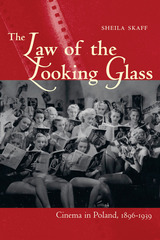 The Law of the Looking Glass: Cinema in Poland, 1896–1939
Sheila Skaff
Ohio University Press, 2008 The Law of the Looking Glass: Cinema in Poland, 1896–1939 reveals the complex relationship between nationhood, national language, and national cinema in Europe before World War II. Author Sheila Skaff describes how the major issues facing the region before World War I, from the relatively slow pace of modernization to the desire for national sovereignty, shaped local practices in film production, exhibition, and criticism. She goes on to analyze local film production, practices of spectatorship in large cities and small towns, clashes over language choice in intertitles, and controversy surrounding the first synchronized sound experiments before World War I. Skaff depicts the creation of a national film industry in the newly independent country, the golden years of the silent cinema, the transition from silent to sound film—and debates in the press over this transition—as well as the first Polish and Yiddish “talkies.” She places particular importance on conflicts in majority-minority relations in the region and the types of collaboration that led to important films such as The Dybbuk and The Ghosts. The Law of the Looking Glass: Cinema in Poland, 1896–1939 is the first comprehensive history of the country’s film industry before World War II. This history is characterized by alternating periods of multilingual, multiethnic production, on the one hand, and rejection of such inclusiveness, on the other. Through it all, however, runs a single unifying thread: an appreciation for visual imagery.
The Law of the Other: The Mixed Jury and Changing Conceptions of Citizenship, Law, and Knowledge
Marianne Constable
University of Chicago Press, 1994 The Law of the Other is an account of the English doctrine of the "mixed jury". Constable's excavation of the historical, rhetorical, and theoretical foundations of modern law recasts our legal and sociological understandings of the American jury and our contemporary conceptions of law, citizenship, and truth.
The "mixed jury" doctrine allowed resident foreigners to have law suits against English natives tried before juries composed half of natives and half of aliens like themselves. As she traces the transformations in this doctrine from the Middle Ages to its abolition in 1870, Constable also reveals the emergence of a world where law rooted in actual practices and customs of communities is replaced by law determined by officials, where juries no longer strive to speak the truth but to ascertain the facts.
 Law, Pragmatism, and Democracy
Richard A. Posner
Harvard University Press, 2005 A liberal state is a representative democracy constrained by the rule of law. Richard Posner argues for a conception of the liberal state based on pragmatic theories of government. He views the actions of elected officials as guided by interests rather than by reason and the decisions of judges by discretion rather than by rules. He emphasizes the institutional and material, rather than moral and deliberative, factors in democratic decision making.
Posner argues that democracy is best viewed as a competition for power by means of regular elections. Citizens should not be expected to play a significant role in making complex public policy regarding, say, taxes or missile defense. The great advantage of democracy is not that it is the rule of the wise or the good but that it enables stability and orderly succession in government and limits the tendency of rulers to enrich or empower themselves to the disadvantage of the public. Posner’s theory steers between political theorists’ concept of deliberative democracy on the left and economists’ public-choice theory on the right. It makes a significant contribution to the theory of democracy—and to the theory of law as well, by showing that the principles that inform Schumpeterian democratic theory also inform the theory and practice of adjudication. The book argues for law and democracy as twin halves of a pragmatic theory of American government.
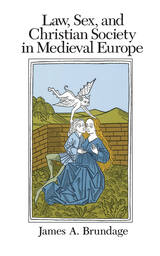 Law, Sex, and Christian Society in Medieval Europe
James A. Brundage
University of Chicago Press, 1990 This monumental study of medieval law and sexual conduct explores the origin and develpment of the Christian church's sex law and the systems of belief upon which that law rested. Focusing on the Church's own legal system of canon law, James A. Brundage offers a comprehensive history of legal doctrines–covering the millennium from A.D. 500 to 1500–concerning a wide variety of sexual behavior, including marital sex, adultery, homosexuality, concubinage, prostitution, masturbation, and incest. His survey makes strikingly clear how the system of sexual control in a world we have half-forgotten has shaped the world in which we live today. The regulation of marriage and divorce as we know it today, together with the outlawing of bigamy and polygamy and the imposition of criminal sanctions on such activities as sodomy, fellatio, cunnilingus, and bestiality, are all based in large measure upon ideas and beliefs about sexual morality that became law in Christian Europe in the Middle Ages.
"Brundage's book is consistently learned, enormously useful, and frequently entertaining. It is the best we have on the relationships between theological norms, legal principles, and sexual practice."—Peter Iver Kaufman, Church History
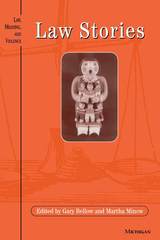 Law Stories
Gary Bellow and Martha Minow, Editors
University of Michigan Press, 1998 "War stories" is the phrase used by academic lawyers to disparage the ways practicing lawyers talk about their experiences. Gary Bellow and Martha Minow in Law Stories have gathered a group of stories that explore the actual experiences of clients and lawyers in concrete legal contexts.
The essays in Law Stories are all first-person accounts of law problems and the way they were handled, written by lawyers involved in the problems. They offer the voice and insight of the self-reflective practitioner. As such they provide us with a dimension missing from many third-person accounts of cases, a layer of emotion and perspective on legal institutions experienced by people caught or working within them.
Focusing on cases arising in public interest practices, the stories deal with problems arising from child custody, parental rights in a Head Start program, the consequences of large corporate bankruptcy for the corporation's retirees, juvenile crime, unemployment benefits, the rights of a victim of crime, the rights of welfare recipients, and the rights of small shareholders. These stories raise a variety of questions, including the nature and extent of the lawyer's role, the way the system listens to certain kinds of stories told in certain ways and refuses to hear other stories, how participation in the legal system affects the identity of those who are involved in it and how the popular image of law and legal processes differs from the reality depicted in these cases.
This book will appeal to both practitioners and teachers of law as well as social scientists interested in studying the role and place of law in the system.
The contributors include Anthony Alfieri, Gary Bellow, Lenora M. Lapidus, Alice and Staughton Lynd, Martha Minow, Nell Minow, Charles Ogletree, Abbe Smith, Lynne Weaver, and Lucie E. White.
"[Law Stories will] enlighten not only law students but the general and professional public who will find these accounts as compelling as any work of popular fiction. Unhappily, these accounts of law's inadequacy as a vehicle for social justice are not fictions. . . ." --Law and Politics Book Review
Gary Bellow and Martha Minow are Professors of Law, Harvard Law School.
 Law Touched Our Hearts: A Generation Remembers Brown v. Board of Education
Mildred Wigfall Robinson
Vanderbilt University Press, 2008 In February 1954, President Eisenhower invited Chief Justice Warren to dinner at the White House. Among the guests were well-known opponents of school desegregation. During that evening, Eisenhower commented to Warren that "law and force cannot change a man's heart." Three months later, however, the Supreme Court handed down its unanimous decision in Brown, and the contributors to this book, like people across the country, were profoundly changed by it, even though many saw almost nothing change in their communities. What Brown did was to elevate race from the country's dirty secret to its most urgent topic of conversation. This book stands alone in presenting, in one source, stories of black and white Americans, men and women, from all parts of the nation, who were public school students during the years immediately after Brown. All shared an epiphany. Some became aware of race and the burden of racial separation. Others dared to hope that the yoke of racial oppression would at last be lifted. The editors surveyed 4750 law professors born between 1936 and 1954, received 1000 responses, and derived these forty essays from those willing to write personal accounts of their childhood experiences in the classroom and in their communities. Their moving stories of how Brown affected them say much about race relations then and now. They also provide a picture of how social change can shape the careers of an entire generation in one profession. Contributors provide accounts from across the nation. Represented are
-de jure states, those segregated by law at the time of Brown, including Alabama, Florida, Georgia, Louisiana, Maryland, Mississippi, North Carolina, South Carolina, Tennessee, Virginia, as well as the District of Columbia
-de facto states, those where segregation was illegal but a common practice, including California, Illinois, Kansas, Massachusetts, Missouri, New Jersey, New York, Ohio, Washington, and Wisconsin.
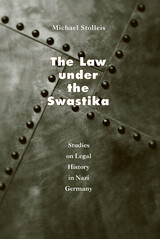 The Law under the Swastika: Studies on Legal History in Nazi Germany
Michael Stolleis
University of Chicago Press, 1997 In the Law under the Swastika, Michael Stolleis examines the evolution of legal history, theory, and practice in Nazi Germany, paying close attention to its impact on the Federal Republic and on the German legal profession. Until the late 1960s, historians of the Nazi judicial system were mostly judges and administrators from the Nazi era. According to Stolleis, they were reluctant to investigate this legal history and maintained the ideal that law could not be affected by politics. Michael Stolleis is part of a younger generation and is determined to honestly confront the past in hopes of preventing the same injustices from happening in the future.
Stolleis studies a wide range of legal fields—constitutional, judicial, agrarian, administrative, civil, and business—arguing that all types of law were affected by the political realities of National Socialism. Moreover, he shows that legal traditions were not relinquished immediately with the onset of a new regime. For the first time we can see clearly the continuities between the Nazi period and the postwar period. The law under National Socialism did not make a complete break with the law during the Weimar Republic, nor did the law of the Federal Republic nullify all of the laws under National Socialism. Through a rich and subtle investigation, Stolleis shows how the legal profession and the political regime both reacted to the conditions of the period and molded the judicial system accordingly.
Breaking the conspiracy of silence held by the justices in the postwar period, Stolleis stresses the importance of researching Nazi law in order to confront ethical problems in today's legal profession.
Law Without Values: The Life, Work, and Legacy of Justice Holmes
Albert W. Alschuler
University of Chicago Press, 2000 In recent decades, Oliver Wendell Holmes has been praised as "the only great American legal thinker" and "the most illustrious figure in the history of American law." But in Albert Alschuler's critique of both Justice Holmes and contemporary legal scholarship, a darker portrait is painted—that of a man who, among other things, espoused Social Darwinism, favored eugenics, and, as he himself acknowledged, came "devilish near to believing that might makes right."
 Lawfully Wedded Husband: How My Gay Marriage Will Save the American Family
Joel Derfner
University of Wisconsin Press, 2013 When Joel Derfner's boyfriend proposed to him, there was nowhere in America the two could legally marry. That changed quickly, however, and before long the two were on what they expected to be a rollicking journey to married bliss. What they didn't realize was that, along the way, they would confront not just the dilemmas every couple faces on the way to the altar—what kind of ceremony would they have? what would they wear? did they have to invite Great Aunt Sophie?—but also questions about what a relationship can and can't do, the definition of marriage, and, ultimately, what makes a family.
Add to the mix a reality show whose director forces them to keep signing and notarizing applications for a wedding license until the cameraman gets a shot she likes; a family marriage history that includes adulterers, arms smugglers, and poisoners; and discussions of civil rights, Sophocles, racism, grammar, and homemade Ouija boards—coupled with Derfner's gift for getting in his own way—and what results is a story not just of gay marriage and the American family but of what it means to be human.
 Lawless Liberators: Political Banditry and Cuban Independence
Rosalie Schwartz
Duke University Press, 1989 Among the forces that took the field in the 1890s in an attempt to overturn the Spanish colonial regime in Cuba were a large number of rural bandits. The alliance between outlaws and more respectable separatists was not accidental, nor did it prove peripheral to Independence strategies. Thieves, extortioners, kidnappers, and killers who cast their lot with veteran insurgents emerged from and contributed to, a century of social and economic upheaval; the reasons cited by many bandits for their outlawry were the same as those that appeared as complaints in revolutionary manifestos. Ransom and extortion money furnished by bandits also often replenished the bankrupt coffers of the rebellion.
Manuel Garcia, a hero-villian of Cuban folklore to this day, was the most notorious of the brigand-patriots and led a gang that spread terror throughout Havana province, contributing to the breakdown of rural order that preceded full-scale rebellion in 1895. Lawless Liberators examines the origins, actions, and ends (often sudden and violent) of the bandit groups such as Garcia’s that paved the way for the revolution and offers a reasoned and balanced analysis of their role in those dramatic events.
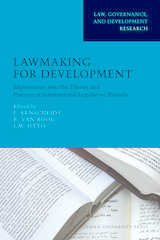 Lawmaking for Development: Explorations into the Theory and Practice of International Legislative Projects
Julia Arnscheidt
Amsterdam University Press, 2008 Over the last decades there has been increased recognition that law and governance matter for development, be it macro-economic growth or the improvement of micro-level basic needs and freedoms. Legislation is a central part of state legal systems, and often the written legal norms are a starting point when seeking improvement of the legal system as a whole, or one of its specific aspects. This volume discusses how legislation (the product) and lawmaking (the process) function in developing countries, and how legislation contributes to development and how lawmaking and legislation can be improved either by the country itself or by donor assisted projects. It covers topics including legal transplantation, legislative quality, linkages between legislation and implementation, and the politics of lawmaking. The resultant volume combines insights from scholars, based on conceptual analysis and empirical research, with ideas from practitioners involved in lawmaking in legal technical assistance projects. Doing so, this volume aims to be useful for both academia and practice.
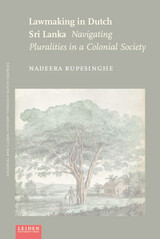 Lawmaking in Dutch Sri Lanka: Navigating Pluralities in a Colonial Society
Nadeera Rupesinghe
Leiden University Press, 2023 Navigating Pluralities marks a break in understanding the history of Roman-Dutch law in Sri Lanka. Methodologically, it challenges socio-legal studies that concentrate on major jurisdictional conflicts alone, emphasizing the lived experience of everyday practices of judicial forums. It uncovers the navigation of plural practices in the Landraad, a judicial forum set up by the Dutch East India Company in seventeenth-century Sri Lanka. A choice of laws came into play in that forum, that choice being significant at varying degrees for different areas of the law such as evidence, inheritance, land, and marriage law. While there was inevitable conflict, the local normative order was as much a social fact for the early colonial rulers as Roman-Dutch law. This is contrary to the received wisdom of the ages that Roman-Dutch law was imposed on the Sinhalese of the maritime provinces under Dutch control. When translated into everyday lives, such adoption of plural practices could rebound on coloniser and colonised in unexpected ways, revealing the complexities of colonial law in practice.
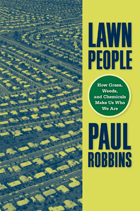 Lawn People: How Grasses, Weeds, and Chemicals Make Us Who We Are
Paul Robbins
Temple University Press, 2007 For some people, their lawn is a source of pride, and for others, caring for their lawn is a chore. Yet for an increasing number of people, turf care is a cause of ecological anxiety. In Lawn People, author Paul Robbins, asks, "How did the needs of the grass come to be my own?" In his goal to get a clearer picture of why people and grasses do what they do, Robbins interviews homeowners about their lawns, and uses national surveys, analysis from aerial photographs, and economic data to determine what people really feel about-and how they treat-their lawns. Lawn People places the lawn in its ecological, economic, and social context. Robbins considers the attention we pay our turfgrass-the chemicals we use to grow lawns, the hazards of turf care to our urban ecology, and its potential impact on water quality and household health. He also shows how the ecology of cities creates certain kinds of citizens, deftly contrasting man's control of the lawn with the lawn's control of man. Lawn People provides an intriguing examination of nature's influence on landscape management and on the ecosystem.
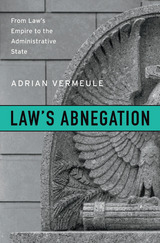 Law’s Abnegation: From Law’s Empire to the Administrative State
Adrian Vermeule
Harvard University Press, 2016 Ronald Dworkin once imagined law as an empire and judges as its princes. But over time, the arc of law has bent steadily toward deference to the administrative state. Adrian Vermeule argues that law has freely abandoned its imperial pretensions, and has done so for internal legal reasons.
In area after area, judges and lawyers, working out the logical implications of legal principles, have come to believe that administrators should be granted broad leeway to set policy, determine facts, interpret ambiguous statutes, and even define the boundaries of their own jurisdiction. Agencies have greater democratic legitimacy and technical competence to confront many issues than lawyers and judges do. And as the questions confronting the state involving climate change, terrorism, and biotechnology (to name a few) have become ever more complex, legal logic increasingly indicates that abnegation is the wisest course of action.
As Law’s Abnegation makes clear, the state did not shove law out of the way. The judiciary voluntarily relegated itself to the margins of power. The last and greatest triumph of legalism was to depose itself.
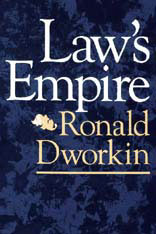 Law’s Empire
Ronald Dworkin
Harvard University Press, 1988 With the incisiveness and lucid style for which he is renowned, Ronald Dworkin has written a masterful explanation of how the Anglo-American legal system works and on what principles it is grounded. Law’s Empire is a full-length presentation of his theory of law that will be studied and debated—by scholars and theorists, by lawyers and judges, by students and political activists—for years to come.
Dworkin begins with the question that is at the heart of the whole legal system: in difficult cases how do (and how should) judges decide what the law is? He shows that judges must decide hard cases by interpreting rather than simply applying past legal decisions, and he produces a general theory of what interpretation is—in literature as well as in law—and of when one interpretation is better than others. Every legal interpretation reflects an underlying theory about the general character of law: Dworkin assesses three such theories. One, which has been very influential, takes the law of a community to be only what the established conventions of that community say it is. Another, currently in vogue, assumes that legal practice is best understood as an instrument of society to achieve its goals. Dworkin argues forcefully and persuasively against both these views: he insists that the most fundamental point of law is not to report consensus or provide efficient means to social goals, but to answer the requirement that a political community act in a coherent and principled manner toward all its members. He discusses, in the light of that view, cases at common law, cases arising under statutes, and great constitutional cases in the Supreme Court, and he systematically demonstrates that his concept of political and legal integrity is the key to Anglo-American legal theory and practice.
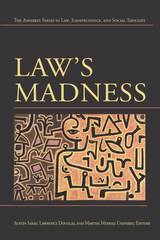 Law's Madness
Austin Sarat, Lawrence Douglas, and Martha Merrill Umphrey, Editors
University of Michigan Press, 2006 Law and madness? Madness, it seems, exists outside the law and, in principle, society struggles to keep these slippery terms separate. From this perspective, madness appears to be law's foil, the chaos that escapes law's control and simultaneously justifies its existence. Law's Madness explores the gray area between the realms of reason and madness.
The distinguished contributors to Law's Madness propose a fascinating interdisciplinary approach to the instability and mutual permeability of law and madness. Their essays examine a variety of discursive forms—from the literary to the historical to the psychoanalytic—in which law is driven more by narrative than by reason. Their studies delineate the ways in which the law takes its definition in part from that which it excludes, suppresses, or excises from itself, illuminating the drive to enforce barriers between non-reason and legality, while simultaneously shedding new light on the constitutive force of the irrational in legal doctrine.
Law's Madness suggests that the tense and paradoxical relationship between law and madness is precisely what erects and sustains law. This provocative collection asks what must be forgotten in order to uphold the rule of law.
Austin Sarat is William Nelson Cromwell Professor of Jurisprudence and Political Science at Amherst College. Lawrence Douglas is Associate Professor of Law, Jurisprudence, and Social Thought at Amherst College. Martha Merrill Umphrey is Associate Professor of Law, Jurisprudence, and Social Thought at Amherst College.
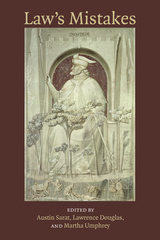 Law's Mistakes
Austin Sarat
University of Massachusetts Press, 2016 From false convictions to botched executions, from erroneous admission of evidence in a criminal trial to misunderstandings that arise in the process of creating contracts, law is awash in mistakes. These mistakes can be unintentional deviations from expected practices or the result of intentional actions that produce unintended negative consequences. They may become part of a process of response and correction or be accepted as an inevitable cost of action. Some mistakes are external to law itself, such as errors in an agreement made by two private parties. Others are made by legal actors in the course of their work; for example, a police officer's failing to obtain a search warrant when one was required.
The essays in Law's Mistakes explore the things that law recognizes as errors and the way it responds to them. They identify the jurisprudential and political perspectives that underlie different understandings of what is or is not a legal mistake, and examine the fraught, contested, and evolving relationship between law and error. And they offer templates for thinking about what mistakes can tell us about the aspirations and limits of law, and for understanding how our imagining of law is enabled and shaped by its juxtaposition to a condition labeled mistake.
In addition to the volume editors, contributors include Paul Schiff Berman, Sonali Chakravarti, Jody L. Medeira, Stewart Motha, Kunal Parker, and Jordan Steiker.
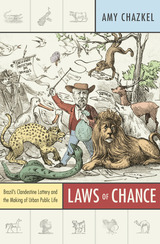 Laws of Chance: Brazil’s Clandestine Lottery and the Making of Urban Public Life
Amy Chazkel
Duke University Press, 2011 The lottery called the jogo do bicho, or “animal game,” originated as a raffle at a zoo in Rio de Janeiro in 1892. During the next decade, it became a cultural phenomenon all over Brazil, where it remains popular today. Laws of Chance chronicles the game’s early history, as booking agents, dealers, and players spread throughout Rio and the lottery was outlawed and driven underground. Analyzing the game’s popularity, its persistence despite bouts of state repression, and its sociocultural meanings, Amy Chazkel unearths a rich history of popular participation in urban public life in the decades after the abolition of slavery in 1888 and the establishment of the Brazilian republic in 1889. Contending that the jogo do bicho was a precursor to the massive informal economies that developed later in the twentieth century, she sheds new light on the roots of the informal trade that is central to daily life in urban Latin America. The jogo do bicho operated as a form of unlicensed petty commerce in the vast gray area between the legal and the illegal. Police records show that players and ticket sellers were often arrested but rarely prosecuted. Chazkel argues that the animal game developed in dialogue with the official judicial system. Ticket sellers, corrupt police, and lenient judges worked out a system of everyday justice that would characterize public life in Brazil throughout the twentieth century.
The Laws of Cool: Knowledge Work and the Culture of Information
Alan Liu
University of Chicago Press, 2004 Knowledge work is now the reigning business paradigm and affects even the world of higher education. But what perspective can the knowledge of the humanities and arts contribute to a world of knowledge work whose primary mission is business? And what is the role of information technology as both the servant of the knowledge economy and the medium of a new technological cool? In The Laws of Cool, Alan Liu reflects on these questions as he considers the emergence of new information technologies and their profound influence on the forms and practices of knowledge.
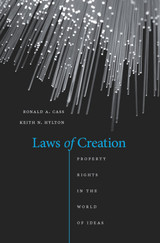 Laws of Creation: Property Rights in the World of Ideas
Ronald A. Cass and Keith N. Hylton
Harvard University Press, 2012 While innovative ideas and creative works increasingly drive economic success, the historic approach to encouraging innovation and creativity by granting property rights has come under attack by a growing number of legal theorists and technologists. In Laws of Creation, Ronald Cass and Keith Hylton take on these critics with a vigorous defense of intellectual property law. The authors look closely at the IP doctrines that have been developed over many years in patent, copyright, trademark, and trade secret law. In each area, legislatures and courts have weighed the benefits that come from preserving incentives to innovate against the costs of granting innovators a degree of control over specific markets. Over time, the authors show, a set of rules has emerged that supports wealth-creating innovation while generally avoiding overly expansive, growth-retarding licensing regimes.
These rules are now under pressure from detractors who claim that changing technology undermines the case for intellectual property rights. But Cass and Hylton explain how technological advances only strengthen that case. In their view, the easier it becomes to copy innovations, the harder to detect copies and to stop copying, the greater the disincentive to invest time and money in inventions and creative works. The authors argue convincingly that intellectual property laws help create a society that is wealthier and inspires more innovation than those of alternative legal systems. Ignoring the social value of intellectual property rights and making what others create and nurture “free” would be a costly mistake indeed.
Laws of Early Iceland: Gragas I
Andrew Dennis
University of Manitoba Press, 2007 The laws of Medieval Iceland provide detailed and fascinating insight into the society that produced the Icelandic sagas. Known collectively as Gragas (Greygoose), this great legal code offers a wealth of information about early European legal systems and the society of the Middles Ages. This first translation of Gragas is in two volumes.
Laws of Early Iceland: Gragas II
Andrew Dennis
University of Manitoba Press, 2000 The laws of Mediaeval Iceland provide detailed and fascinating insight into the society that produced the Icelandic sagas. Known collectively as Gragas (Greygoose), this great legal code offers a wealth of information about early European legal systems and the society of the Middles Ages. This first translation of Gragas is in two volumes.
Laws of Men and Laws of Nature: The History of Scientific Expert Testimony in England and America
Tal Golan
Harvard University Press, 2004 Are scientific expert witnesses partisans, or spokesmen for objective science? This ambiguity has troubled the relations between scientists and the legal system for more than 200 years. Modern expert testimony first appeared in the late eighteenth century, and while its use steadily increased throughout the nineteenth century, in cases involving everything from patents to X-rays, the respect paid to it steadily declined, inside and outside of the courtroom. With deep learning and wry humor, Tal Golan tells stories of courtroom drama and confusion and media jeering on both sides of the Atlantic, until the start of the twenty-first century, as the courts still search for ways that will allow them to distinguish between good and bad science.
Laws of Our Fathers: Popular Culture and the U.S. Constitution
Edited by Ray B. Browne and Glenn J. Browne
University of Wisconsin Press, 1986 The essays in this book trace many of the multitudinous forces at work on the Constitution and in the popular culture and show how the forces control and benefit each other. The subject is of profound importance and, beginning with these essays, needs to be studied at great length for the benefit of us all.
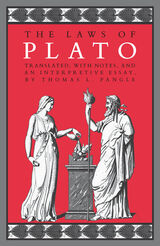 The Laws of Plato
Plato
University of Chicago Press, 1988 The Laws, Plato's longest dialogue, has for centuries been recognized as the most comprehensive exposition of the practical consequences of his philosophy, a necessary corrective to the more visionary and utopian Republic. In this animated encounter between a foreign philosopher and a powerful statesman, not only do we see reflected, in Plato's own thought, eternal questions of the relation between political theory and practice, but we also witness the working out of a detailed plan for a new political order that embodies the results of Plato's mature reflection on the family, the status of women, property rights, criminal law, and the role of religion and the fine arts in a healthy republic.
"Because it succeeds in being both literal and comprehensive, it is by far superior to any translation available. By reproducing dramatic detail often omitted, such as oaths, hesitations, repetitions, and forms of address, Pangle allows the reader to follow the dialogue's interplay between argument and dramatic context. . . . Pangle's translation captures the excitement and the drama of Plato's text."—Mary P. Nichols, Ancient Philosophy
"Pangle's achievement is remarkable. . . . The accompanying interpretive essay is an excellent distillation of a dialogue three times its size. The commentary is thoughtful, even profound; and it amply demonstrates the importance of reading Plato carefully and from a translation that is true to his language."—Patrick Coby, American Political Science Review
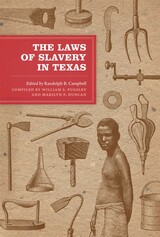 The Laws of Slavery in Texas: Historical Documents and Essays
Edited by Randolph B. Campbell
University of Texas Press, 2010 The laws that governed the institution of slavery in early Texas were enacted over a fifty-year period in which Texas moved through incarnations as a Spanish colony, a Mexican state, an independent republic, a part of the United States, and a Confederate state. This unusual legal heritage sets Texas apart from the other slave-holding states and provides a unique opportunity to examine how slave laws were enacted and upheld as political and legal structures changed. The Laws of Slavery in Texas makes that examination possible by combining seminal historical essays with excerpts from key legal documents from the slave period and tying them together with interpretive commentary by the foremost scholar on the subject, Randolph B. Campbell. Campbell's commentary focuses on an aspect of slave law that was particularly evident in the evolving legal system of early Texas: the dilemma that arose when human beings were treated as property. As Campbell points out, defining slaves as moveable property, or chattel, presented a serious difficulty to those who wrote and interpreted the law because, unlike any other form of property, slaves were sentient beings. They were held responsible for their crimes, and in numerous other ways statute and case law dealing with slavery recognized the humanness of the enslaved. Attempts to protect the property rights of slave owners led to increasingly restrictive laws—including laws concerning free blacks—that were difficult to uphold. The documents in this collection reveal both the roots of the dilemma and its inevitable outcome.
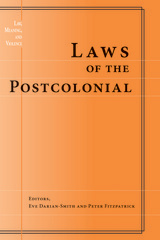 Laws of the Postcolonial
Eve Darian-Smith and Peter Fitzpatrick, Editors
University of Michigan Press, 1999 Although postcolonialism is now the main mode in which the West's relation to the "other" is critically explored, and although law has been at the forefront of that very relation, a thorough engagement between law and postcolonialism has not been pursued, in part because this would drastically disrupt not just the persistent orthodoxy of law and development but also the newly settled consensus around legal globalization and international human rights discourse. These essays break new ground in using the ideas of postcolonialism in a critical analysis of the current consensus on the international influence of Western law and on Western ideas of law in general.
In perceptions of Western law there is an enduring disparity between law's pervasive power and its fragility. Many of these essays provide graphic accounts of law's tremendous shaping power in that massive occidental movement which settled and unsettled the globe. These accounts point to the West's encompassing and transforming of other peoples and other legal systems in ways which constitute and confirm the West in its own self-creation. Other essays deal with situations "within" the West which show how its identity is created, sustained, and also challenged in a constant reference to those contrary "others" which a powerful law has shaped and transformed. This challenge comes not least from the resistance of those "others" --resistances that profoundly disrupt the West and its law, revealing them as fractured at the seemingly confident core of their own self-constitution.
Contributors include Antony Anghie, Rolando Gaete, Alan Norrie, Dianne Otto, Paul Passavant, Jeannine Perdy, Colin Perrin, Annelise Riles, Roshan de Silva, and John Strawson, in addition to the editors.
Eve Darian-Smith is Assistant Professor of Anthropology, University of California, Santa Barbara. Peter Fitzpatrick is Professor of Law, Queen Mary and Westfield College, University of London.
The Laws of the Roman People: Public Law in the Expansion and Decline of the Roman Republic
Callie Williamson
University of Michigan Press, 2015 For hundreds of years, the Roman people produced laws in popular assemblies attended by tens of thousands of voters to publicly forge resolutions to issues that might otherwise have been unmanageable. Callie Williamson's book,The Law of the Roman People, finds that the key to Rome's survival and growth during the most formative period of empire, roughly 350 to 44 B.C.E., lies in its hitherto enigmatic public lawmaking assemblies which helped extend Roman influence and control. Williamson bases her rigorous and innovative work on the entire body of surviving laws preserved in ancient reports of proposed and enacted legislation from these public assemblies.
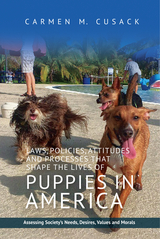 Laws, Policies, Attitudes and Processes that Shape the Lives of Puppies in America: Assessing Society's Needs, Desires, Values and Morals
Carmen C. Cusack
Sussex Academic Press, 2022 Puppies - nubile, tender, and pure - have become endeared to U.S. society, and to some extent, the world. Puppies are the holy grail of animal companions to Americans. They are glorified above other animals and protected by numerous laws, yet they are systematically, lawfully, and illegally abused, tortured, and killed. A vast array of opinions, policies, protocols, rules, regulations, and laws govern treatment or mistreatment of puppies demonstrating that appreciation for puppies is neither ubiquitous, nor superseding. Puppies may be subjected to painful product testing in the U.S., but not in Europe, despite their glorified status above other animals. This book details the myriad of laws, policies, attitudes, misfortunes, and processes shaping puppies' lives in America. Specialized topics such as Bestiality, Child Grooming, Pornography, Film, Mythology, and Art are addressed to build an argument that overall, treatment of puppies in the U.S. reflects priorities, needs, values, and morals which are contextually based on human desires, capabilities, survival mechanisms, altruism, American family life, and the economy. The randomized yet selective treatment of puppies typifies American culture, and to some extent other cultures, at least in the American purview. The author analyzes physiological comparisons between humans and dogs to discover why Americans may be so interested in puppies. The foundations of this research are law, social and behavioral science, policies, history, politics, animal studies, animal welfare, criminal justice, sociology, anthropology, and current events.
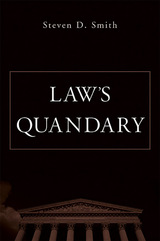 Law’s Quandary
Steven D. Smith
Harvard University Press, 2004 This lively book reassesses a century of jurisprudential thought from a fresh perspective, and points to a malaise that currently afflicts not only legal theory but law in general. Steven Smith argues that our legal vocabulary and methods of reasoning presuppose classical ontological commitments that were explicitly articulated by thinkers from Aquinas to Coke to Blackstone, and even by Joseph Story. But these commitments are out of sync with the world view that prevails today in academic and professional thinking. So our law-talk thus degenerates into "just words"--or a kind of nonsense.
The diagnosis is similar to that offered by Holmes, the Legal Realists, and other critics over the past century, except that these critics assumed that the older ontological commitments were dead, or at least on their way to extinction; so their aim was to purge legal discourse of what they saw as an archaic and fading metaphysics. Smith's argument starts with essentially the same metaphysical predicament but moves in the opposite direction. Instead of avoiding or marginalizing the "ultimate questions," he argues that we need to face up to them and consider their implications for law.
 Law's Violence
Austin Sarat and Thomas R. Kearns, Editors
University of Michigan Press, 1995 "In bringing together accomplished and thoughtful scholars of different disciplines, with a command of literature ranging from the legal to the literary, and in relating the works to the central arguments of the late Professor Robert Cover, Sarat and Kearns have created a first-rate up-to-date exposition of this important and complicated issue, namely, how to understand better the violence implicit and explicit in law."--Legal Studies Forum
The relationship between law and violence is made familiar to us in vivid pictures of police beating suspects, the large and growing prison population, and the tenacious attachment to capital punishment in the United States. Yet the link between law and violence and the ways that law manages to impose pain and death while remaining aloof and unstained are an unexplored mystery. Each essay in this volume considers the question of how violence done by and in the name of the law differs from illegal or extralegal violence--or, indeed, if they differ at all.
Each author draws on a distinctive disciplinary tradition-- literature, history, anthropology, philosophy, political science, or law. Yet each reminds us that law, constituted in response to the metaphorical violence of the state of nature, is itself a doer of literal violence.
Austin Sarat is William Nelson Cromwell Professor of Jurisprudence and Political Science and Chair of the Program in Law, Jurisprudence, and Social Thought, Amherst College. Thomas R. Kearns is William H. Hastie Professor of Philosophy, Amherst College.
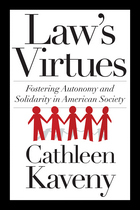 Law's Virtues: Fostering Autonomy and Solidarity in American Society
Cathleen Kaveny
Georgetown University Press, 2012 Can the law promote moral values even in pluralistic societies such as the United States? Drawing upon important federal legislation such as the Americans with Disabilities Act, legal scholar and moral theologian Cathleen Kaveny argues that it can. In conversation with thinkers as diverse as Thomas Aquinas, Pope John Paul II, and Joseph Raz, she argues that the law rightly promotes the values of autonomy and solidarity. At the same time, she cautions that wise lawmakers will not enact mandates that are too far out of step with the lived moral values of the actual community. According to Kaveny, the law is best understood as a moral teacher encouraging people to act virtuously, rather than a police officer requiring them to do so. In Law’s Virtues Kaveny expertly applies this theoretical framework to the controversial moral-legal issues of abortion, genetics, and euthanasia. In addition, she proposes a moral analysis of the act of voting, in dialogue with the election guides issued by the US bishops. Moving beyond the culture wars, this bold and provocative volume proposes a vision of the relationship of law and morality that is realistic without being relativistic and optimistic without being utopian.
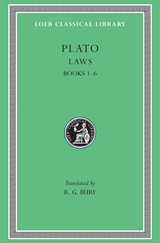 Laws, Volume I: Books 1–6
Plato
Harvard University Press Final thoughts on an ideal constitution.
Plato, the great philosopher of Athens, was born in 427 BC. In early manhood an admirer of Socrates, he later founded the famous school of philosophy in the grove Academus. Much else recorded of his life is uncertain; that he left Athens for a time after Socrates’ execution is probable; that later he went to Cyrene, Egypt, and Sicily is possible; that he was wealthy is likely; that he was critical of “advanced” democracy is obvious. He lived to be 80 years old. Linguistic tests including those of computer science still try to establish the order of his extant philosophical dialogues, written in splendid prose and revealing Socrates’ mind fused with Plato’s thought.
In Laches, Charmides, and Lysis, Socrates and others discuss separate ethical conceptions. Protagoras, Ion, and Meno discuss whether righteousness can be taught. In Gorgias, Socrates is estranged from his city’s thought, and his fate is impending. The Apology (not a dialogue), Crito, Euthyphro, and the unforgettable Phaedo relate the trial and death of Socrates and propound the immortality of the soul. In the famous Symposium and Phaedrus, written when Socrates was still alive, we find the origin and meaning of love. Cratylus discusses the nature of language. The great masterpiece in ten books, the Republic, concerns righteousness (and involves education, equality of the sexes, the structure of society, and abolition of slavery). Of the six so-called dialectical dialogues Euthydemus deals with philosophy; metaphysical Parmenides is about general concepts and absolute being; Theaetetus reasons about the theory of knowledge. Of its sequels, Sophist deals with not-being; Politicus with good and bad statesmanship and governments; Philebus with what is good. The Timaeus seeks the origin of the visible universe out of abstract geometrical elements. The unfinished Critias treats of lost Atlantis. Unfinished also is Plato’s last work, Laws, a critical discussion of principles of law which Plato thought the Greeks might accept.
The Loeb Classical Library edition of Plato is in twelve volumes.
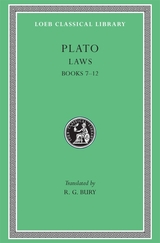 Laws, Volume II: Books 7–12
Plato
Harvard University Press Final thoughts on an ideal constitution.
Plato, the great philosopher of Athens, was born in 427 BC. In early manhood an admirer of Socrates, he later founded the famous school of philosophy in the grove Academus. Much else recorded of his life is uncertain; that he left Athens for a time after Socrates’ execution is probable; that later he went to Cyrene, Egypt, and Sicily is possible; that he was wealthy is likely; that he was critical of “advanced” democracy is obvious. He lived to be 80 years old. Linguistic tests including those of computer science still try to establish the order of his extant philosophical dialogues, written in splendid prose and revealing Socrates’ mind fused with Plato’s thought.
In Laches, Charmides, and Lysis, Socrates and others discuss separate ethical conceptions. Protagoras, Ion, and Meno discuss whether righteousness can be taught. In Gorgias, Socrates is estranged from his city’s thought, and his fate is impending. The Apology (not a dialogue), Crito, Euthyphro, and the unforgettable Phaedo relate the trial and death of Socrates and propound the immortality of the soul. In the famous Symposium and Phaedrus, written when Socrates was still alive, we find the origin and meaning of love. Cratylus discusses the nature of language. The great masterpiece in ten books, the Republic, concerns righteousness (and involves education, equality of the sexes, the structure of society, and abolition of slavery). Of the six so-called dialectical dialogues Euthydemus deals with philosophy; metaphysical Parmenides is about general concepts and absolute being; Theaetetus reasons about the theory of knowledge. Of its sequels, Sophist deals with not-being; Politicus with good and bad statesmanship and governments; Philebus with what is good. The Timaeus seeks the origin of the visible universe out of abstract geometrical elements. The unfinished Critias treats of lost Atlantis. Unfinished also is Plato’s last work, Laws, a critical discussion of principles of law which Plato thought the Greeks might accept.
The Loeb Classical Library edition of Plato is in twelve volumes.
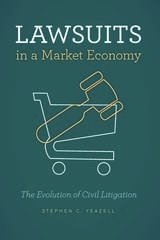 Lawsuits in a Market Economy: The Evolution of Civil Litigation
Stephen C. Yeazell
University of Chicago Press, 2018 Some describe civil litigation as little more than a drag on the economy; Others hail it as the solution to most of the country’s problems. Stephen C. Yeazell argues that both positions are wrong. Deeply embedded in our political and economic systems, civil litigation is both a system for resolving disputes and a successful business model, a fact that both its opponents and its fans do their best to conceal.
Lawsuits in a Market Economy explains how contemporary civil litigation in the United States works and how it has changed over the past century. The book corrects common misconceptions—some of which have proved remarkably durable even in the face of contrary evidence—and explores how our constitutional structure, an evolving economy, and developments in procedural rules and litigation financing systems have moved us from expecting that lawsuits end in trial and judgments to expecting that they will end in settlements. Yeazell argues that today’s system has in some ways overcome—albeit inconsistently—disparities between the rich and poor in access to civil justice. Once upon a time, might regularly triumphed over right. That is slightly less likely today—even though we continue to witness enormous disparities in wealth and power.
The book concludes with an evaluation of recent changes and their possible consequences.
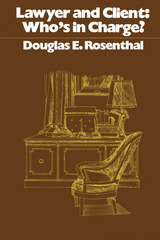 Lawyer and Client: Who's in Charge
Douglas E. Rosenthal
Russell Sage Foundation, 1974 To what extent can and should people participate in dealing with the personal problems they bring to consulting professionals? This book presents two alternative models for the conduct of such professional-client relationships as those between lawyers and clients and doctors and patients. One model, called the traditional, prescribes a role of minimal participation for the client. The other, called the participatory, prescribes a role of decision-making shared by the client and the professional. After presenting the two models and their implications, the book systematically tests their validity in a case study of the lawyer-client relationship in the making of personal injury claims. The distinctive feature of this work is a sophisticated and objective test of the traditional proposition that passive clients get better results than active clients. Evidence drawn from a sample of actual cases of personal injury claimants reveals that active clients in fact fare significantly better than passive clients. The book is important and novel in four respects: it offers the first clear and realistic proposal for increasing the control people can have over the complex problems they bring to professionals; it presents concrete evidence that lay participation in complex decision making need not be inefficient; it gives practical advice to clients and to lawyers for dealing with each other more effectively and it presents a comprehensive picture of the actual and often dramatic experiences of accident victims, and what it is like to make a personal injury claim.
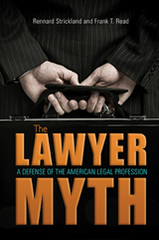 The Lawyer Myth: A Defense of the American Legal Profession
Frank T. Rennard and Read Stickland
Ohio University Press, 2008 Lawyers and the legal profession have become scapegoats for many of the problems of our age. In The Lawyer Myth: A Defense of the American Legal Profession, Rennard Strickland and Frank T. Read look behind current antilawyer media images to explore the historical role of lawyers as a balancing force in times of social, economic, and political change. One source of this disjunction of perception and reality, they find, is that American society has lost touch with the need for the lawyer’s skill and has come to blame unrelated social problems on the legal profession. This highly personal and impassioned book is their defense of lawyers and the rule of law in the United States. The Lawyer Myth confronts the hypocrisy of critics from both the right and the left who attempt to exploit popular misperceptions about lawyers and judges to further their own social and political agendas. By revealing the facts and reasoning behind the decisions in such cases as the infamous McDonald’s coffee spill, the authors provide a clear explanation of the operation of the law while addressing misconceptions about the number of lawsuits, runaway jury verdicts, and legal “technicalities” that turn criminals out on the street. Acknowledging that no system is perfect, the authors propose a slate of reforms for the bar, the judiciary, and law schools that will enable today’s lawyers—and tomorrow’s—to live up to the noble potential of their profession. Whether one thinks of lawyers as keepers of the springs of democracy, foot soldiers of the Constitution, architects and carpenters of commerce, umpires and field levelers, healers of the body politic, or simply bridge builders, The Lawyer Myth reminds us that lawyers are essential to American democracy.
 Lawyering an Uncertain Cause: Immigration Advocacy and Chinese Youth in the US
Michele Statz
Vanderbilt University Press, 2018 Each year, a number of youth who migrate alone and clandestinely from China to the United States are apprehended, placed in removal proceedings, and designated as unaccompanied minors. These young migrants represent only a fraction of all unaccompanied minors in the US, yet they are in many ways depicted as a preeminent professional and moral cause by immigration advocates.
In and beyond the legal realm, the figure of the "vulnerable Chinese child" powerfully legitimates legal claims and attorneys' efforts. At the same time, the transnational ambitions and obligations of Chinese youth implicitly unsettle this figure. The maneuvers of these youth not only belie attorneys' reliance on racialized discourses of childhood and the Chinese family, but they also reveal more broad uncertainties around legal frameworks, institutional practices, health and labor rights—and cause lawyering itself.
Based on three years of fieldwork across the United States, Lawyering an Uncertain Cause is a novel study of the complex and often contradictory rights, responsibilities, and expectations that motivate global youth and the American attorneys who work on their behalf.
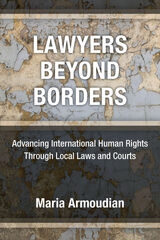 Lawyers Beyond Borders: Advancing International Human Rights Through Local Laws and Courts
Maria Armoudian
University of Michigan Press, 2021 Despite international conventions and human rights declarations, millions of people have suffered and continue to suffer torture, slavery, or violent deaths, with no remedy or recourse. They have fallen, in essence, “below the law,” outside of law’s protection. Often violated by their own governments, sometimes with support from transnational corporations, or nations benefiting from human rights violations, how can these victims find justice? Lawyers Beyond Borders reveals the inner workings of the advances and retreats in the quest for redress and restoration of human rights for those whom international legal-political systems have failed. The process of justice begins in the US, with a handful of human rights lawyers steeped in the American tradition of advancing civil rights through civil litigation. As the civil rights movement gained traction and an ample supply of lawyers, this small cadre turned their attention toward advancing international human rights, via the US legal system. They sought to build another piece of the rights revolution, this time for survivors of egregious human rights violations in faraway lands. These cases were among the most unlikely to be slated for victory: The abuses occurred abroad; the victims are aliens, usually with few, if any, resources; the perpetrators are politically powerful, resourced, and well connected, often members of governments, militaries, or multinational corporations. The legal and political systems’ structures are mostly stacked against these survivors, many who bear the scars of trauma and terror. Lawyers Beyond Borders is about agency. It is about how, in the face of powerful interests and seemingly insurmountable obstacles—political, psychological, economic, geographical, and physical—a small group of lawyers and survivors navigated a terrain of daunting barriers to begin building, case-by-case, new pathways to justice for those who otherwise would have none.
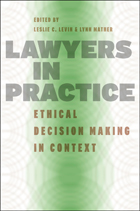 Lawyers in Practice: Ethical Decision Making in Context
Edited by Leslie C. Levin and Lynn Mather
University of Chicago Press, 2012 How do lawyers resolve ethical dilemmas in the everyday context of their practice? What are the issues that commonly arise, and how do lawyers determine the best ways to resolve them? Until recently, efforts to answer these questions have focused primarily on rules and legal doctrine rather than the real-life situations lawyers face in legal practice.
The first book to present empirical research on ethical decision making in a variety of practice contexts, including corporate litigation, securities, immigration, and divorce law, Lawyers in Practice fills a substantial gap in the existing literature. Following an introduction emphasizing the increasing importance of understanding context in the legal profession, contributions focus on ethical dilemmas ranging from relatively narrow ethical issues to broader problems of professionalism, including the prosecutor’s obligation to disclose evidence, the management of conflicts of interest, and loyalty to clients and the court. Each chapter details the resolution of a dilemma from the practitioner’s point of view that is, in turn, set within a particular community of practice. Timely and practical, this book should be required reading for law students as well as students and scholars of law and society.
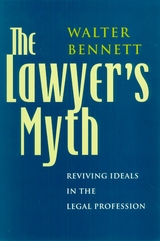 The Lawyer's Myth: Reviving Ideals in the Legal Profession
Walter Bennett
University of Chicago Press, 2001 Lawyers today are in a moral crisis. The popular perception of the lawyer, both within the legal community and beyond, is no longer the Abe Lincoln of American mythology, but is often a greedy, cynical manipulator of access and power. In The Lawyer's Myth, Walter Bennett goes beyond the caricatures to explore the deeper causes of why lawyers are losing their profession and what it will take to bring it back.
Bennett draws on his experience as a lawyer, judge, and law teacher, as well as upon oral histories of lawyers and judges, in his exploration of how and why the legal profession has lost its ennobling mythology. Effectively using examples from history, philosophy, psychology, mythology, and literature, Bennett shows that the loss of professionalism is more than merely the emergence of win-at-all-cost strategies and a scramble for personal wealth. It is something more profound—a loss of professional community and soul. Bennett identifies the old heroic myths of American lawyers and shows how they informed the values of professionalism through the middle of the last century. He shows why, in our more diverse society, those myths are inadequate guides for today's lawyers. And he also discusses the profession's agony over its trickster image and demonstrates how that archetype is not only a psychological reality, but a necessary component of a vibrant professional mythology for lawyers.
At the heart of Bennett's eloquently written book is a call to reinvigorate the legal professional community. To do this, lawyers must revive their creative capacities and develop a meaningful, professional mythology—one based on a deeper understanding of professionalism and a broader, more compassionate ideal of justice.
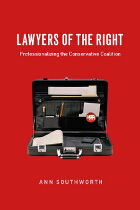 Lawyers of the Right: Professionalizing the Conservative Coalition
Ann Southworth
University of Chicago Press, 2008 A timely and multifaceted portrait of the lawyers who serve the diverse constituencies of the conservative movement, Lawyers of the Right explains what unites and divides lawyers for the three major groups—social conservatives, libertarians, and business advocates—that have coalesced in recent decades behind the Republican Party.
Drawing on in-depth interviews with more than seventy lawyers who represent conservative and libertarian nonprofit organizations, Ann Southworth explores their values and identities and traces the implications of their shared interest in promoting political strategies that give lawyers leading roles. She goes on to illuminate the function of mediator organizations—such as the Heritage Foundation and the Federalist Society for Law and Public Policy—that have succeeded in promoting cooperation among different factions of conservative lawyers. Such cooperation, she finds, has aided efforts to drive law and the legal profession politically rightward and to give lawyers greater prominence in the conservative movement. Southworth concludes, though, that tensions between the conservative law movement’s elite and populist elements may ultimately lead to its undoing.
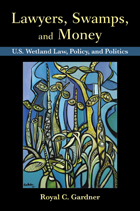 Lawyers, Swamps, and Money: U.S. Wetland Law, Policy, and Politics
Royal C. Gardner
Island Press, 2011 Lawyers, Swamps, and Money is an accessible, engaging guide to the complex set of laws governing America's wetlands. After explaining the importance of these critical natural areas, the book examines the evolution of federal law, principally the Clean Water Act, designed to protect them. Readers will first learn the basics of administrative law: how agencies receive and exercise their authority, how they actually make laws, and how stakeholders can influence their behavior through the Executive Branch, Congress, the courts, and the media. These core concepts provide a base of knowledge for successive discussions of: - the geographic scope and activities covered by the Clean Water Act
- the curious relationship between the U.S. Army Corps of Engineers and the Environmental Protection Agency
- the goal of no net loss of wetlands
- the role of entrepreneurial wetland mitigation banking
- the tension between wetland mitigation bankers and in-lieu fee mitigation programs
- wetland regulation and private property rights.
The book concludes with insightful policy recommendations to make wetlands law less ambiguous and more effective.
A prominent legal scholar and wetlands expert, professor Royal C. Gardner has a rare knack for describing landmark cases and key statutes with uncommon clarity and even humor. Students of environmental law and policy and natural resource professionals will gain the thorough understanding of administrative law needed to navigate wetlands policy-and they may even enjoy it.
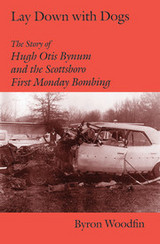 Lay Down with Dogs: Hugh Otis Bynum and the Scottsboro First Monday Bombing
Byron Woodfin
University of Alabama Press, 1997 On the morning of December 4, 1972, the small north Alabama town of Scottsboro was shaken when a bomb ripped through the car of a prominent attorney. What followed were two years of unyielding
investigation resulting in the arrest of the town's wealthiest landowner. The trial that followed pitted Bill Baxley, a young, ambitious Alabama attorney general, against the state's most prominent lawyers. Lay Down with Dogs is the story of a small southern town as it makes the transition from an agrarian hamlet to progressive New South suburbia. It is also the story of a twisted but powerful character, bent on revenge, whose motive was as enigmatic as the man himself. And it is the story of a young prosecutor, willing to risk a promising political future in order to pursue his sense of justice. This book is not only a well-researched account but also a fascinating story of crime, the court, and the many characters brought together at one time and in one place to participate--for good or evil--in an unforgettable drama.
 Lay Sanctity, Medieval and Modern: A Search for Models
Ann W. Astell
University of Notre Dame Press, 2000 Inspired by Vatican II, which attributed a special apostolate to the laity and affirmed their calling to holiness, this volume of original essays focuses on the shifting points of intersection between changing historical definitions of laity and sanctity. Ann W. Astell and ten other scholars examine a series of medieval and modern lay “saints” in order to explore how these figures perceived their own lay status and how this status has been perceived by others.
Through its examination of a series of specific historical figures and movements, Lay Sanctity, Medieval and Modern seeks answers to a set of recurring questions, such as what actually distinguishes the sanctity of the laity from that of the religious, why so few lay persons have been canonized, and to what extent the pursuit of sanctity requires lay saints to either deny or affirm their lay condition. Six essays seek to recover models for lay sanctity in the lives of early saints such as Catherine of Sienna and Angela of Foligno. The five studies of twentieth-century figures such as Elizabeth Leseuer and Jacques and Raissa Maritain suggest the emergence of new, secular ideals of lay sanctity.
Layers of Aspect
Patricia Cabredo Hofherr and Brenda Laca
CSLI, 2010 The eight articles in this volume reexamine the syntactic and semantic analyses of aspect that have been proposed mainly on the basis of aspectual expressions in English. The authors contrast expressions sharing an analogous morpho-syntactic make-up and some core distributional and semantic properties, drawing on a wide range of new empirical data from languages as diverse as Syrian Arabic, Urdu, Brazilian Portuguese, Russian, Indonesian, and German. The papers address four aspect-related problems in particular: the grammatical and semantic constraints on the different readings of the present perfect, the semantic and syntactic analysis of auxiliaries, the impact of adverbial expressions on the aspectual properties of the sentence, and morphology-semantics mapping.
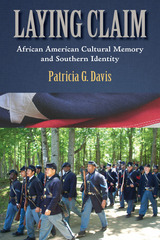 Laying Claim: African American Cultural Memory and Southern Identity
Patricia G. Davis
University of Alabama Press, 2016 Explores the practices and cultural institutions that define and sustain African American “southernness,” demonstrating that southern identity is more expansive than traditional narratives that center on white culture
In Laying Claim: African American Cultural Memory and Southern Identity, Patricia Davis identifies the Civil War as the central narrative around which official depictions of southern culture have been defined. Because that narrative largely excluded African American points of view, the resulting southern identity was monolithically white. Davis traces how the increasing participation of black public voices in the realms of Civil War memory—battlefields, museums, online communities—has dispelled the mirage of “southernness” as a stolid cairn of white culture and has begun to create a more fluid sense of southernness that welcomes contributions by all of the region’s peoples.
Laying Claim offers insightful and penetrating examinations of African American participation in Civil War reenactments; the role of black history museums in enriching representations of the Civil War era with more varied interpretations; and the internet as a forum within which participants exchange and create historical narratives that offer alternatives to unquestioned and dominant public memories. From this evolving cultural landscape, Davis demonstrates how simplistic caricatures of African American experiences are giving way to more authentic, expansive, and inclusive interpretations of southernness.
As a case-study and example of change, Davis cites the evolution of depictions of life at Thomas Jefferson’s Monticello. Where visitors to the site once encountered narratives that repeated the stylized myth of Monticello as a genteel idyll, modern accounts of Jefferson’s day offer a holistic, inclusive, and increasingly honest view of Monticello as the residents on every rung of the social ladder experienced it.
Contemporary violence and attacks about or inspired by the causes, outcomes, and symbols of the Civil War, even one hundred and fifty years after its end, add urgency to Davis’s argument that the control and creation of public memories of that war is an issue of concern not only to scholars but all Americans. Her hopeful examination of African American participation in public memory illuminates paths by which this enduring ideological impasse may find resolutions.
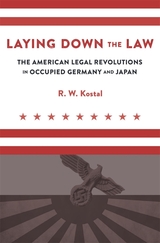 Laying Down the Law: The American Legal Revolutions in Occupied Germany and Japan
R. W. Kostal
Harvard University Press, 2019 Winner of the John Phillip Reed Book Award, American Society for Legal History
A legal historian opens a window on the monumental postwar effort to remake fascist Germany and Japan into liberal rule-of-law nations, shedding new light on the limits of America’s ability to impose democracy on defeated countries.
Following victory in WWII, American leaders devised an extraordinarily bold policy for the occupations of Nazi Germany and Imperial Japan: to achieve their permanent demilitarization by compelled democratization. A quintessentially American feature of this policy was the replacement of fascist legal orders with liberal rule-of-law regimes.
In his comparative investigation of these epic reform projects, noted legal historian R. W. Kostal shows that Americans found it easier to initiate the reconstruction of foreign legal orders than to complete the process. While American agencies made significant inroads in the elimination of fascist public law in Germany and Japan, they were markedly less successful in generating allegiance to liberal legal ideas and institutions.
Drawing on rich archival sources, Kostal probes how legal-reconstructive successes were impeded by German and Japanese resistance on one side, and by the glaring deficiencies of American theory, planning, and administration on the other. Kostal argues that the manifest failings of America’s own rule-of-law democracy weakened US credibility and resolve in bringing liberal democracy to occupied Germany and Japan.
In Laying Down the Law, Kostal tells a dramatic story of the United States as an ambiguous force for moral authority in the Cold War international system, making a major contribution to American and global history of the rule of law.
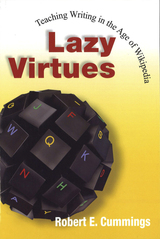 Lazy Virtues: Teaching Writing in the Age of Wikipedia
Robert E. Cummings
Vanderbilt University Press, 2008 Winner of the MLA's Mina P. Shaugnessy Prize for an outstanding work in the fields of language, culture, literacy, or literature with strong application to the teaching of English.
Focusing largely on the controversial website Wikipedia, the author explores the challenges confronting teachers of college writing in the increasingly electronic and networked writing environments their students use every day. Rather than praising or condemning that site for its role as an encyclopedia, Cummings instead sees it as a site for online collaboration between writers and a way to garner audience for student writing.
Applying an understanding of Commons-Based Peer Production theory, as developed by Yochai Benkler, this text is arranged around the following propositions: -- Commons-Based Peer Production is a novel economic phenomenon which informs our current teaching model and describes a method for making sense of future electronic developments. -- College writers are motivated to do their best work when they write for an authentic audience, external to the class. -- Writing for a networked knowledge community invites students to participate in making knowledge, rather than only consuming it. -- A plan for integrating networked writing for an external audience helps students understand the transition from high school to college writing. -- Allowing students to review and self-select points of entry into electronic discourse fosters "laziness," or a new work dynamic where writers seek to better understand their own creativity in terms of a project's demands. Lazy Virtues offers networked writing assignments to foster development of student writers by exposing them to the demands of professional audiences, asking them to identify and assess their own creative impulses in terms of a project's needs, and removing the writing teacher from the role of sole audience.
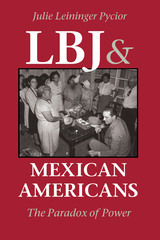 LBJ and Mexican Americans: The Paradox of Power
By Julie Leininger Pycior
University of Texas Press, 1997 T. R. Fehrenbach Award, 1997 As he worked to build his Great Society, Lyndon Johnson often harkened back to his teaching days in the segregated "Mexican" school at Cotulla, Texas. Recalling the poverty and prejudice that blighted his students' lives, Johnson declared, "It never occurred to me in my fondest dreams that I might have the chance to help the sons and daughters of those students and to help people like them all over this country. But now I do have that chance—and I'll let you in on a secret—I mean to use it." This book explores the complex and sometimes contradictory relations between LBJ and Mexican Americans. Julie Pycior shows that Johnson's genuine desire to help Mexican Americans—and reap the political dividends—did not prevent him from allying himself with individuals and groups intent on thwarting Mexican Americans' organizing efforts. Not surprisingly, these actions elicited a wide range of response, from grateful loyalty to, in some cases, outright opposition. Mexican Americans' complicated relationship with LBJ influenced both their political development and his career with consequences that reverberated in society at large.
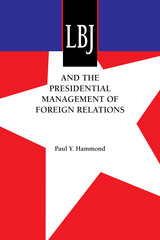 LBJ and the Presidential Management of Foreign Relations
By Paul Y. Hammond
University of Texas Press, 1993 In this insightful study, Paul Y. Hammond, an experienced analyst of bureaucratic politics, adapts and extends that approach to explain and evaluate the Johnson administration’s performance in foreign relations in terms that have implications for the post–Cold War era. The book is structured around three case studies of Johnson’s foreign policy decision making. The first study examines economic and political development. It explores the way Johnson handled the provision of economic and food assistance to India during a crisis in India’s food policies. This analysis provides lessons not only for dealing with African famine in later years but also for assisting Eastern Europe and the former Soviet Union. The second case study focuses on U.S. relations with Western Europe at a time that seemed to require a major change in the NATO alliance. Here, Hammond illuminates the process of policy innovation, particularly the costs of changing well-established policies that embody an elaborate network of established interests. The third case study treats the Vietnam War, with special emphasis on how Johnson decided what to do about Vietnam. Hammond critiques the rich scholarship available on Johnson’s advisory process, based on his own reading of the original sources. These case studies are set in a larger context of applied theory that deals more generally with presidential management of foreign relations, examining a president’s potential for influence on the one hand and the constraints on his or her capacity to control and persuade on the other. It will be important reading for all scholars and policymakers interested in the limits and possibilities of presidential power in the post–Cold War era.
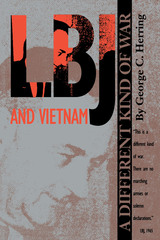 LBJ and Vietnam: A Different Kind of War
By George C. Herring
University of Texas Press, 1994 Decades later, the Vietnam War remains a divisive memory for American society. Partisans on all sides still debate why the war was fought, how it could have been better fought, and whether it could have been won at all. In this major study, a noted expert on the war brings a needed objectivity to these debates by examining dispassionately how and why President Lyndon Johnson and his administration conducted the war as they did. Drawing on a wealth of newly released documents from the LBJ Library, including the Tom Johnson notes from the influential Tuesday Lunch Group, George Herring discusses the concept of limited war and how it affected President Johnson's decision making, Johnson's relations with his military commanders, the administration's pacification program of 1965-1967, the management of public opinion, and the "fighting while negotiating" strategy pursued after the Tet Offensive in 1968. The author's in-depth analysis exposes numerous flaws in Johnson's management of the war. In Herring's view, the Johnson administration lacked any overall strategy for conducting the war. No change in approach was ever discussed, despite popular and even administration dissatisfaction with the progress of the war, and no oversight committee coordinated the activities of the military services and various governmental agencies, which were left to follow their own, often conflicting, agendas.
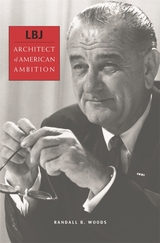 LBJ: Architect of American Ambition
Randall B. Woods
Harvard University Press A Christian Science Monitor Best Nonfiction Book of the Year
“In his masterful new biography, Randall B. Woods convincingly makes the case for Johnson’s greatness—as the last American president whose leadership achieved truly revolutionary breakthroughs in progressive domestic legislation, bringing changes that have improved the lives of most Americans. In this compelling, massive narrative, Woods portrays Johnson fairly and fully in all his complexity, with adequate attention to flaws in his character and his tragic miscalculations in Vietnam.”—Nick Kotz, Washington Post Book World
“In writing LBJ: Architect of American Ambition, Woods has produced an excellent biography that fully deserves a place alongside the best of the Johnson studies yet to appear…Even readers familiar with the many other fine books on Johnson will learn a great deal from Woods…Among Woods’s many achievements in this fine biography is to allow us to see not only the enormous, tragic flaws in this extraordinary man, but also the greatness.”—Alan Brinkley, New York Times Book Review
A distinguished historian of twentieth-century America, Randall B. Woods offers a wholesale reappraisal and sweeping, authoritative account of the life of one of the most fascinating and complex U.S. presidents.
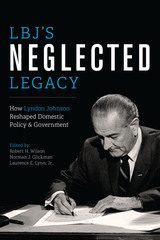 LBJ's Neglected Legacy: How Lyndon Johnson Reshaped Domestic Policy and Government
Edited by Robert H. Wilson, Norman J. Glickman, and Laurence E. Lynn, Jr.
University of Texas Press, 2015 During the five full years of his presidency (1964–1968), Lyndon Johnson initiated a breathtaking array of domestic policies and programs, including such landmarks as the Civil Rights Act, Head Start, Food Stamps, Medicare and Medicaid, the Immigration Reform Act, the Water Quality Act, the Voting Rights Act, Social Security reform, and Fair Housing. These and other “Great Society” programs reformed the federal government, reshaped intergovernmental relations, extended the federal government’s role into new public policy arenas, and redefined federally protected rights of individuals to engage in the public sphere. Indeed, to a remarkable but largely unnoticed degree,Johnson’s domestic agenda continues to shape and influence current debates on major issues such as immigration, health care, higher education funding, voting rights, and clean water, even though many of his specific policies and programs have been modified or, in some cases, dismantled since his presidency. LBJ’s Neglected Legacy examines the domestic policy achievements of one of America’s most effective, albeit controversial, leaders. Leading contributors from the fields of history, public administration, economics, environmental engineering, sociology, and urban planning examine twelve of LBJ’s key domestic accomplishments in the areas of citizenship and immigration, social and economic policy, science and technology, and public management. Their findings illustrate the enduring legacy of Johnson’s determination and skill in taking advantage of overwhelming political support in the early years of his presidency to push through an extremely ambitious and innovative legislative agenda, and emphasize the extraordinary range and extent of LBJ’s influence on American public policy and administration.
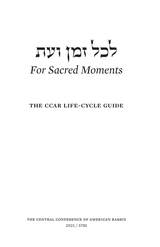 L'chol Z'man v'Eit: For Sacred Moments Book + 2021 Supplement: The CCAR Life-Cycle Guide
Don Goor
Central Conference of American Rabbis, 2021 Now with a new supplement, the CCAR clergy manual contains a wealth of prayers, readings, rituals, and ceremonies, expanding the original to encompass many new situations. Designed for the current moment, its prayers and blessings respond to the evolving role of Reform clergy and the changing life experiences of our congregants. Among these liturgical responses are blessings for moving, starting school, and taking a new name; prayers to support community members dealing with infertility, premature birth, abortion, addiction, eating disorders, assault, and suicide; and an extensive collection of readings to guide communities through times of challenge and pain such as natural disasters, shootings, and antisemitic incidents.
This is the print version of the manual. You will receive a print copy of the original manual in a binder and a print copy of the supplement. The pages from the supplement can be added directly into the original manual.
The LDS Gospel Topics Series: A Scholarly Engagement
Matthew L. Harris and Newell G. Bringhurst
Signature Books, 2020 This anthology provides a scholarly, in-depth analysis of the thirteen Gospel Topics essays issued by the Church of Jesus Christ of Latter-day Saints from December 2013 to October 2015. The contributors reflect a variety of faith traditions, including the LDS Church, Community of Christ, Catholic, and Evangelical Christian. Each contributor is an experienced, thoughtful scholar, many having written widely on religious thought in general and Mormon history in particular. The writers probe the strengths and weaknesses of each of the Gospel Topics essays, providing a forthright discussion on the relevant issues in LDS history and doctrine. The editors hope that these analyses will spark a healthy discussion about the Gospel Topics essays, as well as stimulate further discussion in the field of Mormon Studies.
 Le Corbusier at Work: The Genesis of the Carpenter Center for Visual Arts
Eduard F. Sekler and William Curtis
Harvard University Press, 1978 There is no doubt about Le Corbusier's dominating stature in twentieth century architecture. Here, for the first time, is a richly illustrated portrait of the way he worked out a design from inception to completion; it is an examination of the creative process that looks over the architect's shoulder, seeing his governing principles and typical strategies as well as his working habits and personality.
The book recounts the story of a building that for its creator had a special significance. The Carpenter Center for the Visual Arts at Harvard was one of his last buildings. Le Corbusier was aware that it would be his only one in the United States and thus his only chance to teach an object lesson in a country about which he had very strong feelings. William Curtis describes the Carpenter Center and traces, step by step, the development of its design. Eduard Sekler assesses the building's aesthetics, especially in relation to Le Corbusier's total oeuvre. Rudolph Arnheim and Barbara Norfleet contribute chapters that look at the Carpenter Center as an exercise in creativity and assess its psychological effect and its ability to meet the changing needs of its users.
 Le Corbusier: The City of Refuge, Paris 1929/33
Brian Brace Taylor
University of Chicago Press, 1988 The City of Refuge complex—commissioned by the Salvation Army as part of its program to transform social outcasts into spiritually renewed workers—represents a significant confluence of design principles, technological experiments, and attitudes on reform. It also provides rare insights into the work of one of the twentieth century's greatest architects, Le Corbusier.
Brian Brace Taylor draws on extensive archival research to reconstruct each step of the architect's attraction to the commission, his design process and technological innovations, the social and philosophical compatibility of the Salvation Army with Le Corbusier's own ideas for urban planning, and finally, the many modifications required, first to eliminate defects and later to accommodate changes in the services the building provided. Throughout, Taylor focuses on Le Corbusier's environmental, technological, and social intentions as opposed to his strictly formal intentions. He shows that the City of Refuge became primarily a laboratory for the architect's own research and not simply a conventional solution to residents' requirements or the Salvation Army's program.
Le Corbusier's Formative Years: Charles-Edouard Jeanneret at La Chaux-de-Fonds
H. Allen Brooks
University of Chicago Press, 1997 In Le Corbusier's Formative Years we learn what made Le Corbusier the person, and the designer that he was. Using twenty years of research, H. Allen Brooks has unearthed an incredible wealth of documents that show every facet of the formative years of this influential architect.
"There is much in this fine volume for anyone interested not just in architecture, but in the roots of human creativity and in the origins of the most powerful artistic current of our century. . . . This book is a life's work of scholarship. It has been well spent."—Toronto Globe and Mail
Le Français - Instructor’s Manual: Départ—Arrivée
John A. Rassias and Jacqueline de La Chapelle Skubly
Dartmouth College Press, 2008 The third of three connected volumes of Le Français, making up a unique French language tutorial by the renowned creator of The Rassias Method®
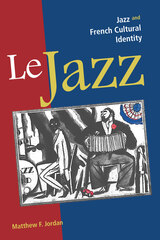 Le Jazz: Jazz and French Cultural Identity
Matthew F. Jordan
University of Illinois Press, 2010 In Le Jazz, Matthew F. Jordan deftly blends textual analysis, critical theory, and cultural history in a wide-ranging and highly readable account of how jazz progressed from a foreign cultural innovation met with resistance by French traditionalists to a naturalized component of the country's identity. Jordan draws on sources including ephemeral critical writing in the press and twentieth-century French literature to trace the country's reception of jazz, from the Cakewalk dance craze and the music's significance as a harbinger of cultural recovery after World War II to its place within French ethnography and cultural hybridity. Countering the histories of jazz's celebratory reception in France, Jordan delves in to the reluctance of many French citizens to accept jazz with the same enthusiasm as the liberal humanists and cosmopolitan crowds of the 1930s. Jordan argues that some listeners and critics perceived jazz as a threat to traditional French culture, and only as France modernized its identity did jazz become compatible with notions of Frenchness. Le Jazz speaks to the power of enlivened debate about popular culture, art, and expression as the means for constructing a vibrant cultural identity, revealing crucial keys to understanding how the French have come to see themselves in the postwar world.
The Le Mans Forgeries: A Chapter from the History of Church Property in the Ninth Century
Walter A. Goffart
Harvard University Press The “Le Mans Forgeries,” relating the history of the bishops of Le Mans from apostolic times to 840, have long been acknowledged to be tendentious, and many historians have sought to determine their date, authorship, and purpose. Walter Goffart has assembled these widely scattered and unevenly edited texts and has established their unity of composition, date, and the legal circumstances the forger hoped to exploit to serve the interests of his bishopric. He also provides a critical analysis of the Le Mans charters. His study is a notable contribution to source criticism and to the history of church property and its law in the Carolingian period.
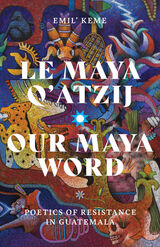 Le Maya Q’atzij/Our Maya Word: Poetics of Resistance in Guatemala
Emil’ Keme
University of Minnesota Press, 2021 Bringing to the fore the voices of Maya authors and what their poetry tells us about resistance, sovereignty, trauma, and regeneration In 1954, Guatemala suffered a coup d’etat, resulting in a decades-long civil war. During this period, Indigenous Mayans were subject to displacement, disappearance, and extrajudicial killing. Within the context of the armed conflict and the postwar period in Guatemala, K’iche’ Maya scholar Emil’ Keme identifies three historical phases of Indigenous Maya literary insurgency in which Maya authors use poetry to dignify their distinct cultural, political, gender, sexual, and linguistic identities. Le Maya Q’atzij / Our Maya Word employs Indigenous and decolonial theoretical frameworks to critically analyze poetic works written by ten contemporary Maya writers from five different Maya nations in Iximulew/Guatemala. Similar to other Maya authors throughout colonial history, these authors and their poetry criticize, in their own creative ways, the continuing colonial assaults to their existence by the nation-state. Throughout, Keme displays the decolonial potentialities and shortcomings proposed by each Maya writer, establishing a new and productive way of understanding Maya living realities and their emancipatory challenges in Iximulew/Guatemala. This innovative work shows how Indigenous Maya poetics carries out various processes of decolonization and, especially, how Maya literature offers diverse and heterogeneous perspectives about what it means to be Maya in the contemporary world.
 Le principe d’anarchie: Heidegger et la question de l'agir
Reiner Schürmann
Diaphanes, 2013 Par une lecture à rebours de l’oeuvre de Martin Heidegger, Reiner Schürmann vise à mettre au jour ce qu’il identifie comme son impensé : le principe d’anarchie. Affirmant que le projet de destruction de l’ontologie annoncé dans Être et temps n’est pleinement intelligible qu’à partir des derniers jalons de cette pensée, Schürmann fait ainsi apparaître ce que Heidegger n’avait pu expliciter lui-même. Selon lui, la question de l’être telle qu’elle est posée par le philosophe de Fribourg est indissociable de celle de l’agir. Déconstruisant la métaphysique occidentale, Heidegger aurait ainsi sapé toute possibilité de donner une arché à l'action humaine. Le paradoxe d’un principe d’anarchie, principe de « dépérissement de la règle », est aux yeux de Schürmann ce qui permet de penser l’ambiguïté de la transition opérée par Heidegger.
Interprétation audacieuse et vivifiante de l’une des oeuvres philosophiques les plus marquantes du XXᵉ siècle, Le principe d’anarchie a influencé de nombreux philosophes français contemporains. Trente ans après la première publication, la présente réédition témoigne que cette oeuvre longtemps épuisée n’a rien perdu de son actualité ni de sa force.
Le Roman de Vrai Amour and Le Pleur de Sainte Ame
Edited by Arthur S. Bates
University of Michigan Press, 1958 A manuscript copy of “Le Roman de vrai amour,” a poem that had been mentioned in scholarly literature but thought to be lost, was discovered in Cornell University Library’s archives in 1938. This copy, made in Friburg, Sweden in the early fifteenth century, contains a second poem, “Le Pleur de sainte âme,” originally thought to be a continuation of “Le Roman de vrai amour.” Though both poems address the love of God, scholars determined that differences in language, style, and approach to content marked them as works of different authors. The text of both poems is included in this volume, along with introductory material on language, subject matter, what is known of their authorship and origins, and a table of rhyme schemes.
 Le socialisme du capital
Christian Marazzi
Diaphanes, 2017 Depuis l'effondrement des banques en 2008, le capitalisme semble être entré dans une phase de stagnation durable, mais aussi dans une instabilité géopolitique et monétaire. Le scénario qui se joue sous nos yeux évoque une sorte de « socialisme du capital » : l’État, qui subvient aux besoins des « soviets de la finance », impose à la société la dictature du marché. Plutôt qu’un effet parasite du capitalisme, cette financiarisation pourrait bien constituer la forme aussi essentielle que perverse de son nouveau régime.
Les textes rassemblés dans le présent recueil analysent et commentent les changements économiques survenus ces dix dernières années en revenant sur leurs acteurs principaux, sur certains symptômes de la crise ainsi que sur des phénomènes qui ont pu apparaître jusque-là comme marginaux. Loin d’adopter une approche simplificatrice ou moralisante, Christian Marazzi relit les enseignements de Michel Foucault sur la biopolitique pour tenter d’interpréter les bouleversements contemporains comme des transformations fondamentales du politique.
Le spectre du capital
Joseph Vogl
Diaphanes, 2010 Dans un contexte de crise financière omniprésente et durablement installée, Joseph Vogl interroge le système capitaliste, ses arcanes, ses modes de fonctionnement, la manière dont il se perpétue. Censé reposer sur une confiance multilatérale, le système des marchés est en réalité traversé d’inquiétude et d’instabilité. Ce qu’on définit comme ses « excès », en particulier la spéculation sous ses formes les plus extrêmes, semble au contraire en faire partie intégrante. Inscrit dans un rapport au temps qui refuse toute réflexion à long terme et passe d’un présent à l’autre ; régi par des responsabilités diluées dans une « main invisible », un spectre agitant dans l’ombre les flux de capitaux ; le monde financier se voit entouré d’une aura mystérieuse, aussi incompréhensible qu’imprévisible. L’enjeu de ce livre est de saisir comment l’économie financière tente de comprendre un monde qu’elle a elle-même engendré.
 Le trouvère: Opera in Four Acts by Salvadore Cammarano, French Translation by Émilien Pacini
Giuseppe Verdi
University of Chicago Press, 2025 The first publication of Le trouvère in full score, and the first of Verdi’s French operas to appear in The Works of Giuseppe Verdi series.
By the time Le trouvère premiered at the Paris Opéra in 1857, Giuseppe Verdi had first-hand knowledge of the unique demands of French theater. He had adapted his earlier work I Lombardi alla prima crociata (La Scala, 1843) as Jérusalem in 1847, and in 1855 he composed Les vêpres siciliennes, especially for the Opéra. Il trovatore, set in Spain against the backdrop of civil unrest, was especially suited to Parisian tastes, which required spectacular performances with plenty of choreography. Verdi expanded the score with a four-part ballet in the third act and rewrote the ending, where he introduced a reprise of his celebrated “Miserere,” which is first heard at the start of the fourth act. By all accounts, the resulting work displayed extraordinary musical and dramatic efficacy and, after a successful premiere, Le trouvère remained in the Opéra repertory through the opening decades of the twentieth century.
There is no extant autograph manuscript for Le trouvère. This critical edition is based primarily on a manuscript full score used at the premiere and during rehearsals, preserved at the Bibliothèque de l’Opéra in Paris. Editor David Lawton’s introduction to this edition discusses the origins, rehearsals, and reception of Le trouvère, the numerous sources preserved in French, Belgian, Italian, and British archives, and performance issues including staging, vocal style, and orchestral considerations.
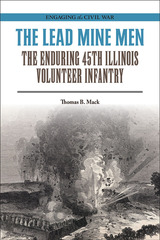 The Lead Mine Men: The Enduring 45th Illinois Volunteer Infantry
Thomas B. Mack
Southern Illinois University Press, 2023 WINNER, Certificate of Excellence in “Scholarly Publications” from the Illinois State Historical Society’s 2025 Best of Illinois History Awards! The regiment that never ran
To destroy Confederate infrastructure, avenge the horrors of slavery, and shorten the war, the 45th Illinois Volunteer Infantry imposed the pillaging of hard-war philosophy upon Confederate lands. This comprehensive and engaging narrative explores the Civil War ordeals and triumphs of the “Lead Mine men” who hailed from eleven counties in northern Illinois. Thomas B. Mack uncovers the history on this unit of resilient midwesterners and how they brought hard-war to the Confederacy in 1862, earlier than other historians have previously suggested.
During their service the regiment compiled an exceptional record. The 45th fought under General Ulysses S. Grant in the war’s western theater, earning honors at Vicksburg and in Tennessee. The men later reenlisted as veterans and served in General William T. Sherman’s Atlanta, Savannah, and Carolina campaigns. Mack considers the soldiers’ community, discipline, and faith in Providence during their service in the Union Army of the Tennessee and how, despite the unit’s high casualties, they upheld the lowest rate of desertion due to their fervent patriotism.
Throughout The Lead Mine Men, Mack’s focus remains on the soldiers—their extensive training in Galena and Chicago and their time in camp and in combat. He follows their experiences from recruitment to their celebratory march in the 1865 Grand Review to their postwar lives in which many struggled to adjust, receive their government pensions, and protect the unit’s legacy. In this book, Mack broadens our understanding of the Union soldiers who saved their republic and ended slavery within its borders.
 Leaded: The Poisoning of Idaho's Silver Valley
Michael C. Mix
Oregon State University Press, 2016 Leaded: The Poisoning of Idaho’s Silver Valley examines the origin, evolution, and causes of harmful environmental and human health effects caused by mining operations in Idaho’s Coeur d'Alene Mining District, the “Silver Valley,” from 1885-1981. During that period, district mines produced over $4 billion worth of lead, silver, and zinc. The Bunker Hill Company dominated business and community activities through ownership of its rich mine, lead smelter, and zinc plant.
During the first half of the 20th century, industrial mining operations caused severe environmental damage to area waterways and lands from releases of lead and other toxic metals, and sulfur gases. Despite the obvious devastation, no effective federal laws regulating mining and smelting operations were passed until the 1970s, due to the influence of the mine and lead industry in state and federal politics, and scientific uncertainties about pollution effects. Harmful human health effects were evident soon after the smelter opened in 1917, when Bunker Hill workers suffered from lead poisoning, but no federal laws regulating workplace lead were passed until the 1970s.
In 1974, lead smelter emissions from Bunker Hill caused the largest epidemic of childhood lead poisoning in U.S. history. That landmark event ultimately led to the EPA mandating federal air lead standards in 1978 and, at the same time, NIOSH passed national standards reducing occupational lead exposures. Bunker Hill could not meet the new standards; consequently, the company closed in 1981, leaving behind a contaminated geographic area that was classified as the largest Superfund site in the United States in 1983.
Leaded is a deeply researched account of one of the greatest environmental disasters in our history. It belongs on the bookshelf of every student of environmental history, western history, mining history, environmental ethics, and environmental law.
 Leaders in Plastic Surgery: The Dingman-Grabb Era 1946-1986
Robert M. Oneal, MD, and Lauralee A. Lutz
Michigan Publishing, 2017 Leaders in Plastic Surgery traces the inspirational leadership of Reed O. Dingman, DDS, MD, and William C. Grabb, MD, and details the origins and growth of plastic and reconstructive surgery and the training of residents in Ann Arbor, Michigan, and the University of Michigan. It covers the years before and during the period of explosive innovations that have led the specialty to provide hope, correction, and rehabilitation to vast numbers of people suffering from a wide range of congenital abnormalities and acquired deformities. The authors, because of their long, personal association with plastic surgery in Ann Arbor, have brought to life the extensive accomplishments of the two leaders in terms of surgical techniques, surgical education, and important applied research while also documenting the many important contributions from the younger faculty and the trainees to the training program during those forty years. Many from that time frame have contributed their own memories, which has greatly enriched the documentation of an amazing history of an era past but not forgotten.
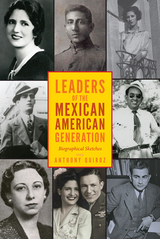 Leaders of the Mexican American Generation: Biographical Essays
Anthony Quiroz
University Press of Colorado, 2016 Leaders of the Mexican American Generation explores the lives of a wide range of influential members of the US Mexican American community between 1920 and 1965 who paved the way for major changes in their social, political, and economic status within the United States.
Including feminist Alice Dickerson Montemayor, to San Antonio attorney Gus García, and labor activist and scholar Ernesto Galarza, the subjects of these biographies include some of the most prominent idealists and actors of the time. Whether debating in a court of law, writing for a major newspaper, producing reports for governmental agencies, organizing workers, holding public office, or otherwise shaping space for the Mexican American identity in the United States, these subjects embody the core values and diversity of their generation.
More than a chronicle of personalities who left their mark on Mexican American history, Leaders of the Mexican American Generation cements these individuals as major players in the history of activism and civil rights in the United States. It is a rich collection of historical biographies that will enlighten and enliven our understanding of Mexican American history.
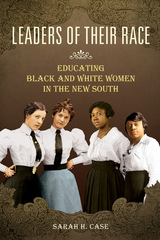 Leaders of Their Race: Educating Black and White Women in the New South
Sarah Case
University of Illinois Press, 2017 Secondary level female education played a foundational role in reshaping women's identity in the New South. Sarah H. Case examines the transformative processes involved at two Georgia schools--one in Atlanta for African-American girls and young women, the other in Athens and attended by young white women with elite backgrounds. Focusing on the period between 1880 and 1925, Case's analysis shows how race, gender, sexuality, and region worked within these institutions to shape education. Her comparative approach shines a particular light on how female education embodied the complex ways racial and gender identity functioned at the time. As she shows, the schools cultivated modesty and self-restraint to protect the students. Indeed, concerns about female sexuality and respectability united the schools despite their different student populations. Case also follows the lives of the women as adult teachers, alumnae, and activists who drew on their education to negotiate the New South's economic and social upheavals.
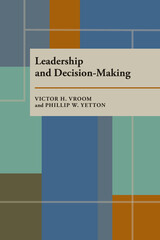 Leadership and Decision-Making
Victor H. Vroom
University of Pittsburgh Press, 1976
It has become a truism that “leadership depends upon the situation,” but few behavioral scientists have attempted to go beyond that statement to examine the specific ways in which leaders should and do vary their behavior with situational demands. Vroom and Yetton select a critical aspect of leadership style-the extent to which the leader encourages the participation of his subordinates in decision-making. They describe a normative model which shows the specific leadership style called for in different classes of situations. The model is expressed in terms of a “decision tree” and requires the leader to analyze the dimensions of the particular problem or decision with which he is confronted in order to determine how much and in what way to share his decision-making power with his subordinates.
Other chapters discuss how leaders behave in different situations. They look at differences in leadership styles, and what situations induce people to display autocratic or participative behavior.
Leadership and Organizational Culture: New Perspectives on Administrative Theory and Practice
Edited by Thomas J. Sergiovanni and John E. Corbally
University of Illinois Press, 1984 This volume addresses one of the most important concerns of contemporary administrative theory and practice -- the culture and quality of administrative leadership and its crucial importance to organizational effectiveness. Focusing on public organizations (particularly those in higher education), the book uses an interdisciplinary approach that will be especially useful for scholars and administrators in education, political science, sociology, and business.
Leadership and Values: The Organization of Large-Scale Taiwanese Enterprises
Robert H. Silin
Harvard University Press, 1976 Leadership and Values provides new material in two key areas. First, it is an in-depth study of the organization and administration of large-scale Chinese enterprises, with considerable detail on Chinese behavior in such settings. Second, the author constructs from the Chinese data a framework for the cross-cultural analysis of large-scale organizations. This framework identifies key variables that, when considered systematically, permit a clearer understanding of the role of cultural factors in organizational behavior and design.
The data for this study were gathered by participant-observer techniques at firms in Taiwan, and many of the findings are assumed to apply in large part to behavioral patterns on the mainland and in other areas of Chinese culture.
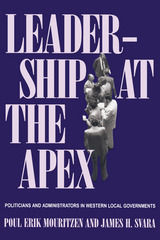 Leadership At The Apex: Politicians and Administrators in Western Local Governments
Poul Erik Mouritzen
University of Pittsburgh Press, 2002
Although the relationship between elected officials and appointed executives has often been viewed as a struggle between master and servant—with disagreements as to which individuals occupy which roles—Poul Erik Mouritzen’s and James Svara’s comparison of city governments in fourteen countries reveals more interdependence and shared influence than conflict over control.
Mouritzen and Svara bring local government to the forefront, emphasizing the sophisticated level of city management in Australia, Belgium, Denmark, Finland, France, Ireland, Italy, the Netherlands, Norway, Portugal, Spain, Sweden, the United Kingdom, and the United States. Their findings lead to a revision of the general view concerning the boundaries of public administration. <I>Leadership at the Apex</I> illustrates in practical ways how the democratic control of government and professional administration can coexist without undermining the logic or integrity of each other.
 Leadership: Beyond Establishment Views
Edited by James G. Hunt, Uma Sekaran, and Chester A. Schriesheim
Southern Illinois University Press, 1981
Volume 6 of the Leadership Symposia—sponsored by the Department of Administrative Sciences and College of Business Administration at Southern Illinois University, Carbondale—charts the state of the field of leadership through a judicious mixture of established and emerging scholars.
The text is broken into four parts, with each part containing an Introduction by the editors. Part 1 consists of “Leadership and Managerial Behavior as Loosely Coupled Systems for Moving Beyond Establishment Views,” by the editors; “The Relevance of Some Studies of Managerial Work and Behavior to Leadership Research,” Rosemary Stewart; “Unstructured, Nonparticipant Observation and the Study of Leaders’ Interpersonal Contacts,” Robert S. Bussom, Lars L. Larson, and William M. Vicars; “Leaders on Line,” Michael M. Lombardo and Morgan W. McCall, Jr.; and “Various Paths Beyond Establishment Views,” Bernard Wilpert.
Part 2 contains “Multiplexed Supervision and Leadership,” Fred Dansereau, Jr., Joseph A. Alutto, Steven E. Markham, and MacDonald Dumas; “A Theory of Leadership Categorization,” Robert G. Lord, Roseanne J. Foti, and James S. Phillips; “Leadership Activation Theory,” John E. Sheridan, Jeffrey L. Kerr, and Michael A. Abelson; and “Intensity of Relation, Dyadic-Group Considerations, Cognitive Categorization, and Transformational Leadership,” Bernard M. Bass; “Strategies for Dealing with Different Processes in Different Contexts,” Ian Morley, “A Multiplexed Response to Bass and Morley,” Fred Dansereau, Jr., Joseph A. Alutto, Steven E. Markham, and MacDonald Dumas; and “Properly Categorizing the Commentary,” Roseanne J. Foti, Robert G. Lord, and James S. Phillips.
Part 3 contains “SYMLOG and Leadership Theory,” Robert F. Bales and Daniel J. Isenberg; “Toward a Macro-Oriented Model of Leadership: An Odyssey,” James G. Hunt and Richard N. Osborn; and “Toward a Paradigm Shift in the Study of Leadership,” Henry J. Tosi, Jr.
Essays in part 4 are “If You’re Not Serving Bill and Barbara, Then You’re Not Serving Leadership,” Henry Mintzberg; “Beyond Establishment Leadership Views: An Epilog,” by the editors; “Leadership Research and the European Connection: An Epilog,” Dian-Marie Hosking and James G. Hunt; and “Conclusion: The Leadership-Management Controversy Revisited,” Schriesheim, Hunt, and Sekaran.
 Leadership Counts: Lessons for Public Managers from the Massachusetts Welfare, Training, and Employment Program
Robert Behn
Harvard University Press, 1991 How can public officials move large government agencies to produce significant results? In Leadership Counts, Robert Behn explains exactly what managers in the inherently political environment of government need to do to obtain such performance.
In 1983 the leadership of the Massachusetts Department of Public Welfare—Charles M. Atkins, Thomas P. Glynn, Barbara Burke-Tatum, and Jolie Bain Pillsbury—set out to educate and train welfare recipients, place them in good jobs, and move them from dependency to self-sufficiency. From these efforts to accomplish a specific and important public purpose, Behn extracts the fundamental ingredients of successful public leadership.
Behn’s analysis spans the spectrum of managerial tasks—from the almost spiritual responsibility to create and communicate a public mission to the seemingly mundane chore of motivating specific individuals to accomplish specific tasks. He describes how to manage for performance, examines how effective leaders can use external success to build internal morale, and analyzes the dilemmas of evaluating ongoing and evolving public policies. He explains in detail how accomplishing specific purposes requires “management by groping along.” And he analyzes three different metastrategies for government executives—strategies that emphasize policy, administration, or leadership.
Leadership Counts is more than an intriguing success story. It offers specific lessons that the nominal head of any government agency can employ to become the organization’s true leader. This insightful book will be of interest not only to students and teachers of public management but to leaders at all levels of government—from the principal of a school to the secretary of defense.
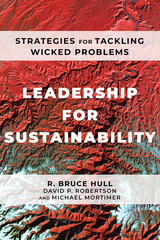 Leadership for Sustainability: Strategies for Tackling Wicked Problems
R. Bruce Hull, David P. Robertson, and Michael Mortimer
Island Press, 2020 Solving today’s environmental and sustainability challenges requires more than expertise and technology. Effective solutions will require that we engage with other people, wrestle with difficult questions, and learn how to adapt and make confident decisions despite uncertainty. We need new approaches to leadership that empower professionals at all levels to tackle wicked problems and work towards sustainability. Leadership for Sustainability gives readers perspective and skills for promoting creative and collaborative solutions. Blending systems thinking approaches with leadership techniques, it offers dozens of strategies and specific practices that build on the foundation of three main skills: connecting, collaborating, and adapting. Inspiring case studies show how the book’s strategies and principles can be applied to diverse situations: - Coordinating the activities of widely dispersed individuals and groups who may not even know they are connected, illustrated by the work of urban planners, local businesses, citizens, and other stakeholders advancing ambitious climate action goals via a Community Energy Plan in Arlington County, Virginia
- Collaborating with diverse stakeholders to span boundaries despite their differences of opinion, expertise, and culture, as illustrated by the bold actions of a social entrepreneur who transformed the global food service industry with the “plant-forward” movement
- Adapting to continuous change and confounding uncertainty, as a small nonprofit organization mobilizes partners to tackle poverty, water scarcity, sanitation, and climate change in rural India
Readers will come away with a holistic understanding of how to lead from where they are by applying leadership principles and practices to a wide range of wicked situations. While the challenges we face are daunting, the authors argue that these situations present opportunities for creating a more just, healthy, and prosperous world.
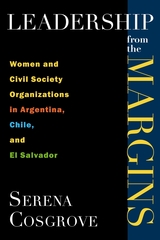 Leadership From the Margins: Women and Civil Society Organizations in Argentina, Chile, and El Salvador
Cosgrove, Serena
Rutgers University Press, 2010 Women have experienced decades of economic and political repression across Latin America, where many nations are built upon patriarchal systems of power. However, a recent confluence of political, economic, and historical factors has allowed for the emergence of civil society organizations (CSOs) that afford women a voice throughout the region.
Leadership from the Margins describes and analyzes the unique leadership styles and challenges facing the women leaders of CSOs in Argentina, Chile, and El Salvador. Based on ethnographic research, Serena Cosgrove's analysis offers a nuanced account of the distinct struggles facing women, and how differences of class, political ideology, and ethnicity have informed their outlook and organizing strategies. Using a gendered lens, she reveals the power and potential of women's leadership to impact the direction of local, regional, and global development agendas.
 Leadership In A Free Society: A Study in Human Relations Based on an Analysis of Present-Day Industrial Civilization
Thomas North Whitehead
Harvard University Press Routine, custom, and habitual associations have always been considered the necessary foundation for human initiative and for the effective experience of individual adventure. The rise of modern technology, however, has resulted in a new type of progressive society, which may or may not provide the stability needed for human satisfaction. This is the question to which Professor Whitehead has here addressed himself. His book is written for those who seek a solution in intelligent evolution based on a faithful analysis of the observable facts, rather than in some radical departure from accustomed procedure. Recognizing that the problem centers itself somewhere in the activities of business and industry, he makes a brilliant analysis of present-day industrial civilization and reaches conclusions that will cut through the fog of wishful sentiment that invalidates most writing on this vital subject.
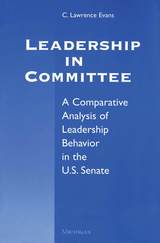 Leadership in Committee: A Comparative Analysis of Leadership Behavior in the U.S. Senate
C. Lawrence Evans
University of Michigan Press, 2001 How does the leadership of a Senate committee influence the outcome of bills? In Leadership in Committee C. Lawrence Evans delves into the behavior of legislative leaders and the effects of what they do, how their tactics vary, and why. Using evidence gleaned from personal interviews with a large number of U.S. senators and Senate staff, the author compares the leadership styles of eight committee chairs and ranking minority members in the U.S. Senate. The result is a significant contribution to the literature on American politics, the first book-length, comparative analysis of legislative leadership behavior in the modern Senate. ". . . .this book is highly recommended reading for those interested in both legislative politics and political leadership. . . .Leadership in Committee establishes Evans as one of the handful of political scientists who have done justice to the subtleties of politics in the modern Senate."
---Randall Strahan, Journal of Politics "Larry Evans has significantly influenced my own work over the years, and Leadership in Committee is one reason why. It is a model of great scholarship, the best work on committee leadership ever written. It has the discriminatory sense of context that appears only when the author truly knows his subject. It is theoretical without being reductionist or vacuously abstract. Its principal claims are general yet sufficiently concrete to be testable, and Evans provides systematic, comparative evidence to support (or qualify) each of them. Larger issues of agenda-setting, institutional structure, partisanship, anticipated reactions, participation, committee-floor bargaining, and strategic action of various kinds receive thoughtful and insightful examination. And the book is simply a terrific read. Too long in coming, the publication of Leadership in Committee in paperback ought to spark a well-deserved revival of interest in this work."
---Richard L. Hall, University of Michigan
 Leadership in the Modern Presidency
Fred I. Greenstein
Harvard University Press, 1988 In presidential election years the leadership qualities of occupants of the Oval Office become yardsticks for aspiring candidates. What profile of qualities, both positive and negative, helps explain the performance of chief executives? In this book about the White House, nine eminent political scientists and historians present their assessments of the leadership styles and organizational talents of presidents from Franklin D. Roosevelt to Ronald Reagan. Filled with anecdote and insight, this is an unprecedented opportunity to observe how the running of the office of President has been changed, subtly and not so subtly, by the management and personal styles of the various incumbents within their historical contexts.
The book vividly depicts each president. There is Roosevelt, “a real artist in government”; Truman, a strong executive who always managed to appear weak; Eisenhower, who cultivated the image of being “above the fray” of politics but was actually fully occupied with getting political results; Kennedy, who successfully projected the symbolic grandeur of his office; Johnson, a figure from classical tragedy; Nixon, who preferred a corporate to a political mode of operation; Ford, who placed healing the nation’s wounds from Vietnam and Watergate above his personal political future; Carter, whose fall was as stunning as his rise was meteoric. The chapter on Reagan is an impassioned encomium of the president as a folk philosopher that is bound to be controversial.
These accounts of leadership by modern presidents are acute studies of how the presidency has become the first among equals in our tripartite system of government. This book will be important to political scientists, historians, and government officials, and the liveliness of its presentation and the quotidian impact of the men it describes will make it attractive to everyone interested in how we are governed and who is doing the governing.
 Leadership in the Time of Covid: Pandemic Responses in Central Europe
Milada Polišenská
Central European University Press, 2023 The Covid pandemic has put all modern societies to a serious test of resilience. The interdisciplinary research on which this book is based examined how four European governments behaved in these circumstances. During the months of the crisis, the team of experts coordinated by the editors of this volume took a close look at the decision-making processes in the Czech Republic, Hungary, Poland, and Slovakia – the so-called Visegrad Four. The inquiries focused on experiences from the academic, health, economic and social fields. The methods of comparison included surveys, interviews, discourse analysis, for which the adaptive leadership theory provided the conceptual framework. The conclusions are both academic and practical. Aside the description of the pandemic responses, the research had a formative dimension: how can an adaptive leadership approach better help societies manage the health and societal impacts of similar challenges? The spectrum of emerging anti-democratic tendencies in the region provided the specific context of the exercise. The four states face varying degrees of democratic backsliding as well as illiberal influences that have affected their response to the pandemic, which gives this research on the Visegrad Four a worldwide resonance.
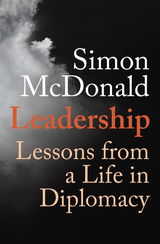 Leadership: Lessons from a Life in Diplomacy
Simon Mcdonald
Haus Publishing, 2023 A British diplomat shares lessons on leadership gained over his expansive career.
Simon McDonald argues that we should reflect on the nature and strategies of leadership before entering a leadership role, and we should look to examples of others to help us in shaping our own approaches.
Over nearly four decades in Her Majesty's Diplomatic Service, McDonald worked for four permanent under-secretaries and a dozen senior ambassadors before becoming a permanent under-secretary himself and leading the Service—which has over 14,000 staff members in 270 countries—for five years. He also worked directly for six foreign secretaries and under five prime ministers. Observing these people undertaking such important and difficult work, McDonald saw the behaviors which helped them achieve their objectives, as well as those which hindered them.
In this book, McDonald synthesizes the skills he’s learned through his many years working in diplomacy, offering an insightful contribution amid heightening debates over the leadership of the United Kingdom. Considering the future of British leadership, he makes a case for the reform of the monarchy, the cabinet, civil service, and, in particular, the House of Lords, of which he has been a member since 2021.
Leadership Organizations in the House of Representatives: Party Participation and Partisan Politics
Scott R. Meinke
University of Michigan Press, 2016 In recent Congresses, roughly half of the members of the U.S. House of Representatives served in whip organizations and on party committees. According to Scott R. Meinke, rising electoral competition and polarization over the past 40 years have altered the nature of party participation. In the 1970s and 1980s, the participation of a wide range of members was crucial to building consensus. Since then, organizations responsible for coordination in the party have become dominated by those who follow the party line. At the same time, key leaders in the House use participatory organizations less as forums for internal deliberations over policy and strategy than as channels for exchanging information with supporters outside Congress, and broadcasting sharply partisan campaign messages to the public.
Leadership, Social Cohesion, and Identity in Late Antique Spain and Gaul (500-700)
Dolores Castro
Amsterdam University Press, 2023 The replacement of the Roman Empire in the West with emerging kingdoms like Visigothic Spain and Merovingian Gaul resulted in new societies, but without major population displacement. Societies changed because identities shifted and new points of cohesion formed under different leaders and leadership structures. This volume examines two kingdoms in the post-Roman west to understand how this process took shape. Though exhibiting striking continuities with the Roman past, Gaul and Spain emerged as distinctive, but not isolated, political entities that forged different strategies and drew upon different resources to strengthen their unity, shape social ties, and consolidate their political status.
Leadership: Understanding the Dynamics of Power and Influence in Organizations, Second Edition
Robert P. Vecchio
University of Notre Dame Press, 2007 Today, there are a growing number of business schools, law schools, and continuing education programs in executive development and management training that offer leadership classes. Despite the growing curricular recognition of this area, there is a shortage of strong college-level texts. Leadership, Second Edition—a completely up-to-date anthology of key writings by well-known contributors—meets this need for a textbook that encompasses the major theories in the field of leadership.
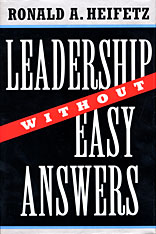 Leadership Without Easy Answers
Ronald Heifetz
Harvard University Press, 1994 The economy uncertain, education in decline, cities under siege, crime and poverty spiraling upward, international relations roiling: we look to leaders for solutions, and when they don’t deliver, we simply add their failure to our list of woes. In doing do, we do them and ourselves a grave disservice. We are indeed facing an unprecedented crisis of leadership, Ronald Heifetz avows, but it stems as much from our demands and expectations as from any leader’s inability to meet them. His book gets at both of these problems, offering a practical approach to leadership for those who lead as well as those who look to them for answers. Fitting the theory and practice of leadership to our extraordinary times, the book promotes a new social contract, a revitalization of our civic life just when we most need it.
Drawing on a dozen years of research among managers, officers, and politicians in the public realm and the private sector, among the nonprofits, and in teaching, Heifetz presents clear, concrete prescriptions for anyone who needs to take the lead in almost any situation, under almost any organizational conditions, no matter who is in charge, His strategy applies not only to people at the top but also to those who must lead without authority—activists as well as presidents, managers as well as workers on the front line.
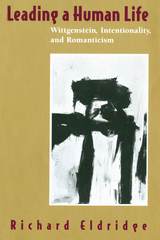 Leading a Human Life: Wittgenstein, Intentionality, and Romanticism
Richard Eldridge
University of Chicago Press, 1997 In this provocative new study, Richard Eldridge presents a highly original and compelling account of Wittgenstein's Philosophical Investigations, one of the most enduring yet enigmatic works of the twentieth century. He does so by reading the text as a dramatization of what is perhaps life's central motivating struggle—the inescapable human need to pursue an ideal of expressive freedom within the difficult terms set by culture.
Eldridge sees Wittgenstein as a Romantic protagonist, engaged in an ongoing internal dialogue over the nature of intentional consciousness, ranging over ethics, aesthetics, and philosophy of mind. The picture of the human mind that emerges through this dialogue unsettles behaviorism, cognitivism, and all other scientifically oriented orthodoxies. Leading a human life becomes a creative act, akin to writing a poem, of continuously seeking to overcome both complacency and skepticism. Eldridge's careful reconstruction of the central motive of Wittgenstein's work will influence all subsequent scholarship on it.
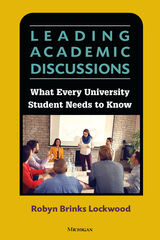 Leading Academic Discussions: What Every University Student Needs to Know
Robyn Brinks Lockwood
University of Michigan Press, 2021 The ability to lead a successful discussion in a seminar or course, or as part of key project team, is critical to success in and beyond higher education. Leading Academic Discussions describes the six moves, or parts, of a typical academic discussion and provides many examples of language that can be used to accomplish these moves. A variety of tasks then offers practice for students in the roles of participants and leaders because, to be a good leader, students must first be good participants. Although discussions are heavily reliant on words, they are also influenced and affected by other verbal cues, such as pronunciation, stress, pitch, or tone. Because speakers need to both notice and use these cues to make their messages clear to other participants, the text addresses these factors as well. Additionally, non-verbal communication plays an essential role as well, so one chapter is devoted to it. Throughout the text, reflection questions about leading discussions are provided for those who are or hope to be teaching assistants (TAs) and project leads/managers. Video analysis tasks are included to accompany the six mini discussion videos that are open and available at www.press.umich.edu/elt/compsite/leading.
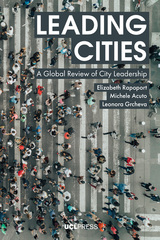 Leading Cities: A Global Review of City Leadership
Edited by Elizabeth Rapoport, Michele Acuto, and Leonora Grcheva
University College London, 2019 Leading Cities is a global review of the state of city leadership and urban governance today. Drawing on research into more than two hundred cities in one hundred countries, the book provides broad, international evidence grounded in the experiences of all types of cities. It offers a scholarly, but also a practical, assessment of how cities are led, what challenges their leaders face, and the ways in which this leadership is increasingly connected to global affairs. Arguing that effective leadership is not just something created by an individual, Elizabeth Rapoport, Michele Acuto, and Leonora Grcheva focus on three elements of city leadership: leaders, the structures and institutions that underpin them, and the tools used to drive change. Each of these elements is examined in turn, as are the major urban policy issues that leaders confront today. The book also takes a deep dive into one particular example of a tool or instrument of city leadership: the strategic urban plan.
Leading Edges in Social and Behavioral Science
R. Duncan Luce
Russell Sage Foundation, 1990 The reach of the social and behavioral sciences is currently so broad and interdisciplinary that staying abreast of developments has become a daunting task. The thirty papers that constitute Leading Edges in Social and Behavioral Science provide a unique composite picture of recent findings and promising new research opportunities within most areas of social and behavioral research. Prepared by expert scholars under the auspices of the National Academy of Sciences, these timely and well-documented reports define research priorities for an impressive range of topics: Part I: Mind and Brain Part II: Behavior in Social Context Part III: Choice and Allocation Part IV: Evolving Institutions Part V: Societies and International Orders Part VI: Data and Analysis
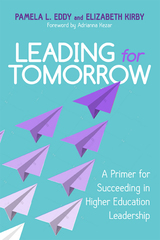 Leading for Tomorrow: A Primer for Succeeding in Higher Education Leadership
Pamela L. Eddy
Rutgers University Press, 2020 When faculty climb the ranks into leadership positions, they come with years of knowledge and experience, yet they are often blindsided by the delicate interpersonal situations and political minefields they must now navigate as university administrators. What are the specific skills that faculty need to acquire when they move into administrative positions, and how can they build upon their existing abilities to excel in these roles? What skills can other mid-level leaders learn to help in their positions?
Using an engaging case study approach, Leading for Tomorrow provides readers with real-world examples that will help them reflect on their own management and communication styles. It also shows newly minted administrators how they can follow best practices while still developing a style of leadership that is authentic and uniquely their own.
The book’s case studies offer practical solutions for how to deal with emerging trends and persistent problems in the field of higher education, from decreasing state funding to political controversies on campus. Leading for Tomorrow gives readers the tools they need to get the best out of their team, manage conflicts, support student success, and instill a campus culture of innovation that will meet tomorrow’s challenges.
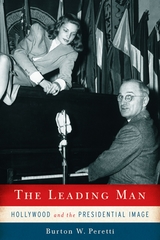 The Leading Man: Hollywood and the Presidential Image
Peretti, Burton W
Rutgers University Press, 2012 American presidents and Hollywood have interacted since the 1920s. This relationship has made our entertainment more political and our political leadership more aligned with the world of movies and movie stars.
In The Leading Man, Burton W. Peretti explores the development of the cinematic presidential image. He sets the scene in chapter 1 to show us how the chief executive, beginning with George Washington, was positioned to assume the mantle of cultural leading man. As an early star figure in the young republic, the president served as a symbol of national survival and wish fulfillment. The president, as head of government and head of state, had the potential to portray a powerful and charismatic role.
At the center of the story are the fourteen presidents of the cinematic era, from Herbert Hoover to Barack Obama. Since the 1920s, the president, like the lead actor in a movie, has been given the central place on the political stage under the intense glare of the spotlight. Like other American men, future presidents were taught by lead movie actors how to look and behave, what to say, and how to say it. Some, like John F. Kennedy and Richard M. Nixon, took particular care to learn from the grooming, gestures, movements, and vocal inflections of film actors and applied these lessons to their political careers. Ronald Reagan was a professional actor. Bill Clinton, a child of the post–World War II Baby Boom, may have been the biggest movie fan of all presidents. Others, including Lyndon Johnson, showed little interest in movies and their lessons for politicians.
Presidents and other politicians have been criticized for cheapening their offices by hiring image and advertising consultants and staging their public events. Peretti analyzes the evolution and the significance of this interaction to trace the convoluted history of the presidential cinematic image. He demonstrates how movies have been the main force in promoting appearance and drama over the substance of governing, and how Americans’ lives today may be dominated by entertainment at the expense of their engagement as citizens.
Leading Public Sector Innovation: Co-creating for a Better Society
Christian Bason
Bristol University Press, 2010 In a time of unprecedented turbulence, how can public sector organisations increase their ability to find innovative solutions to society's problems? Leading Public Sector Innovation shows how government agencies can use co-creation to overcome barriers and deliver more value, at lower cost, to citizens and business. Through inspiring global case studies and practical examples, the book addresses the key triggers of public sector innovation. It shares new tools for citizen involvement through design thinking and ethnographic research, and pinpoints the leadership roles needed to drive innovation at all levels of government. Leading Public Sector Innovation is essential reading for public managers and staff, social innovators, business partners, researchers, consultants and others with a stake in the public sector of tomorrow.
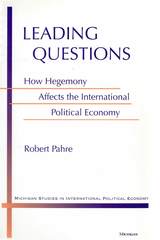 Leading Questions: How Hegemony Affects the International Political Economy
Robert Pahre
University of Michigan Press, 1999 Leadership has long been an important subject in the study of international economic relations. Many scholars give American leadership credit for strong economic growth in western Europe and Japan after World War II. Other scholars have accused leading nations of using their power to the detriment of foreign countries. For example, it is often argued that a failure of both British and American leadership was a cause of the Great Depression of the 1930s.
In Leading Questions, Robert Pahre develops a series of formal models to determine under what conditions leadership will be beneficial or harmful for the international political economy. He begins with a simple model of collective action and then adds leadership, security concerns, cooperation, and multilateral regimes to this basic model. He tests each model against a different historical period between 1815 and 1967.
Pahre's findings challenge conventional wisdom on international leadership. He finds that a leading state harms others when it has many allies but is good for the international political economy when it lacks allies. Leaders are less likely to engage in international cooperation than are other states, but having a leader in the system makes cooperation among follower states more likely. Cooperation by others may cause the leader to join a system of multilateral cooperation.
Pahre presents the technical material in an accessible style. By challenging the conventional interpretations of political economy in several historical periods, Leading Questions will be of interest not only to political scientists but also to economists and historians.
Robert Pahre is Associate Professor of Political Science, University of Illinois at Urbana-Champaign.
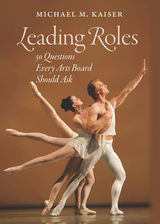 Leading Roles: 50 Questions Every Arts Board Should Ask
Michael M. Kaiser
Brandeis University Press, 2010 Not-for-profit arts organizations struggled to survive the recent economic recession. In this increasingly hardscrabble environment, it is absolutely imperative that the boards of these organizations function as energetically, creatively, and efficiently as possible. Michael M. Kaiser’s personal history with boards of arts organizations began when he served on the board of the Washington Opera (now the Washington National Opera) in 1983. Today, in his capacity as president of the John F. Kennedy Center for the Performing Arts, Kaiser recently completed a 50-state, 69-city Arts in Crisis tour. Board issues came up repeatedly as central to the success or failure of the organization. Drawing on these and many other conversations, nationally and internationally, Kaiser’s book offers members of boards and staffs the information they need to create the healthy atmosphere necessary to thriving arts organizations. Organized in a clear, readable, question-and-answer format, Leading Roles covers every aspect of board participation in the life of the organization, including mission and governance; fundraising and marketing responsibilities; the relationship of the board to the artistic director, executive director, and staff; and its responsibilities for planning and budgeting. Kaiser addresses boards in crisis, international boards, and boards of arts organizations of color. Throughout, he emphasizes the importance of transparency and clarity in the board’s dealings with its own members and those of the arts community of which it is a part, showing how anything less results in contentiousness that can immobilize an arts organization, or even tear it apart.
Leading the Inclusive City: Place-Based Innovation for a Bounded Planet
Robin Hambleton
Bristol University Press, 2014 Growing global inequality is often at its most stark in cities—and cities themselves are often seen as powerless to affect the problem, which is driven more by national and global trends than by local policies. While acknowledging the difficulties cities face, Leading the Inclusive City mounts a powerful case that cities do have tools at their disposal for ameliorating inequality, advancing social justice, promoting environmental responsibility, and bolstering community empowerment. Using examples from cities around the world, Robin Hambleton educates and inspires, offering practical ideas for local leaders who want to change urban life for the better.
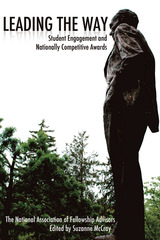 Leading the Way: Student Engagement and Nationally Competitive Awards
Suzanne McCray
University of Arkansas Press, 2009 Here are eleven essays addressing various aspects of the application process: building an office, engaging students in research, connecting them to internships and other special opportunities, embracing diversity, defining leadership, involving faculty, and preparing for an interview. There are also realistic assessments of the odds of winning a scholarship. Three of the essays are by directors or presidents of the Ron Brown Scholar Program, the Senator George J. Mitchell Scholarship Research Institute, and the Coca-Cola Scholars Foundation. The essays are a result of the National Association of Fellowships Advisors conference, NAFA in Washington: Scholarships in a National Context, held in Washington, D.C., in July of 2007. The collection is a valuable resource for faculty, advisors, and administrators who want to provide opportunities for student engagement and to use the process to help shape tomorrow’s leaders. The book also includes two appendices: “NAFA Foundation and Institutional Membership” and “Competitive Scholarships, Opportunities, Internships, and Programs at a Glance.”
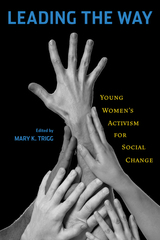 Leading the Way: Young Women's Activism for Social Change
Trigg, Mary K
Rutgers University Press, 2009 Leading the Way is a collection of personal essays written by twenty-one young, hopeful American women who describe their work, activism, leadership, and efforts to change the world. It responds to critical portrayals of this generation of "twenty-somethings" as being disengaged and apathetic about politics, social problems, and civic causes. Bringing together graduates of a women's leadership certificate program at Rutgers University's Institute for Women's Leadership, these essays provide a contrasting picture to assumptions about the current death of feminism, the rise of selfishness and individualism, and the disaffected Millennium Generation. Reflecting on a critical juncture in their lives, the years during college and the beginning of careers or graduate studies, the contributors' voices demonstrate the ways that diverse, young, educated women in the United States are embodying and formulating new models of leadership, at the same time as they are finding their own professional paths, ways of being, and places in the world. They reflect on controversial issues such as gay marriage, gender, racial profiling, war, immigration, poverty, urban education, and health care reform in a post-9/11 era. Leading the Way introduces readers to young women who are being prepared and empowered to assume leadership roles with men in all public arenas, and to accept equal responsibility for making positive social change in the twenty-first century.
Leading Together
Irene M.H. Herold
Association of College & Research Libraries, 2021
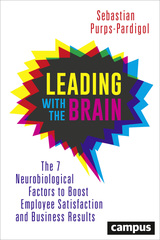 Leading with the Brain: The 7 Neurobiological Factors to Boost Employee Satisfaction and Business Results
Sebastian Purps-Pardigol
Campus Verlag, 2016 How do business leaders inspire their employees so deeply that employees strive to surpass their own best work, helping managers and their staff to achieve mutual success? Sebastian Purps-Pardigol has figured it out—and the answer starts with the brain. Based on insights from neuroscience, psychology, and behavioral economics, as well as one hundred and fifty interviews with employees and CEOs, he has devised a new, innovative approach to the meaning of leadership today and what it takes to make businesses unbeatable.
In Leading with the Brain, Purps-Pardigol presents seven factors all business leaders should keep in mind to not only make their workforce feel more satisfied, but also to increase the overall health and well-being of their staff. Drawing on real-life examples of businesses that succeed by managing according to scientific findings, Purps-Pardigol shows that by leading in a people-oriented, humane way, managers can release their employees’ hidden energies to the benefit of all.
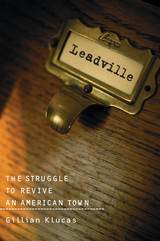 Leadville: The Struggle To Revive An American Town
Gillian Klucas
Island Press, 2004 Leadville explores the clash between a small mining town high up in Colorado's Rocky Mountains and the federal government, determined to clean up the toxic mess left from a hundred years of mining. Set amidst the historic streets and buildings reflecting the town's past glory as one of the richest nineteenth-century mining districts in North America-a history populated with characters such as Meyer Guggenheim and the Titanic's unsinkable Molly Brown-the Leadville Gillian Klucas portrays became a battleground in the 1980s and 1990s. The tale begins one morning in 1983 when a flood of toxic mining waste washes past the Smith Ranch and down the headwaters of the Arkansas River. The event presages a Superfund cleanup campaign that draws national attention, sparks local protest, and triggers the intervention of an antagonistic state representative. Just as the Environmental Protection Agency comes to town telling the community that their celebrated mining heritage is a public health and environmental hazard, the mining industry abandons Leadville, throwing the town into economic chaos. Klucas unveils the events that resulted from this volatile formula and the remarkable turnaround that followed. The author's well-grounded perspective, in-depth interviews with participants, and keen insights make Leadville a portrait vivid with characterizations that could fill the pages of a novel. But because this is a real story with real people, It shows the reality behind the Western mystique and explores the challenges to local autonomy and community identity brought by a struggle for economic survival, unyielding government policy, and long-term health consequences induced by extractive-industry practices. The proud Westerners of Leadville didn't realize they would be tangling with a young and vigorous Environmental Protection Agency in a modern-day version of an old Western standoff. In the process, Klucas shows, both sides would be forced to address hard questions about identity and the future with implications that reach far beyond Leadville and the beautiful high valley that nurtures it.
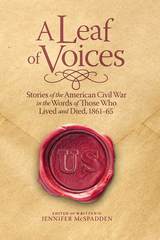 A Leaf of Voices: Stories of the American Civil War in the Words of Those Who Lived and Died, 1861-65
Jennifer McSpadden
Indiana Historical Society Press, 2014 During the American Civil the Wabash Intelligencer and the Wabash Plain Dealer frequently printed letters from Wabash County men serving in the Union army. The letter writers are a remarkable cast of characters: young and old, soldiers, doctors, ministers, officers, enlisted men, newspaper men, and a fifteen-year-old printers’ devil who enlisted as a drummer boy.
These are not stories of generals or battle strategies; they are the stories of the ordinary soldiers and their everyday lives. They describe long tiring marches across state after state, crossing almost impossible terrain, facing shortages of rations and supplies, enduring extremes of weather where they froze one day and sweltered the next, and encountering guerrillas that harried the wagon trains. The correspondents wrote of walking over the bodies of fallen comrades and foes alike, of mules and their wagons sinking into muddy roads that became like quicksand, of shipwrecks, and of former slaves.
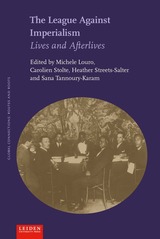 The League Against Imperialism: Lives and Afterlives
Edited by Michele Louro, Carolien Stolte, Heather Streets-Salter, and Sana Tannoury-Karam
Leiden University Press, 2020 The League Against Imperialism: Lives and Afterlives explores the dramatic and engaging story of a global institution that brought together activists across geographical and political borders for the goal of eradicating colonial rule worldwide. The League against Imperialism (LAI) attracted anticolonial activists like India’s Jawaharlal Nehru, Indonesia’s Sukarno, and Kenya’s Jomo Kenyatta, as well as prominent figures such as Albert Einstein, Ernst Toller, Romain Rolland, Upton Sinclair, Mohandas Gandhi, and Madame Sun Yat-Sen. This volume is the first to capture the global history of the LAI by bringing together contributions by scholars researching the movement from various regions, languages, and archives. Told primarily from the perspectives of those on the peripheries of empires, the volume argues that interwar anti-imperialism was central to the story of transnational activism during the interwar years and remained an inspiration for many who took on leadership roles during decolonization across the global south.
The League of Nations
Ruth Henig
Haus Publishing, 2010 Ninety years ago, the League of Nations convened for the first time hoping to create a safeguard against destructive, world-wide war by settling disputes through diplomacy. This book looks at how the League was conceptualized and explores the multifaceted body that emerged. This new form for diplomacy was used in ensuing years to counter territorial ambitions and restrict armaments, as well as to discuss human rights and refugee issues. The League’s failure to prevent World War II, however, would lead to its dissolution and the subsequent creation of the United Nations. As we face new forms of global crisis, this timely book asks if the UN’s fate could be ascertained by reading the history of its predecessor.
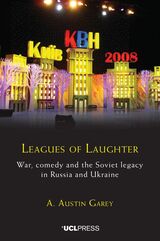 Leagues of Laughter: War, Comedy and the Soviet Legacy in Russia and Ukraine
A. Austin Garey
University College London, 2025 An exploration of how comedy has shaped civil society—and become a form of subtle political resistance—in post-Soviet Russia and Ukraine.
Leagues of Laughter traces the evolution of a Soviet-created youth game called KVN (Klub veselykh i nakhodchivykh or Club of the Cheerful and Clever) over sixty years as students’ nation-states collapsed, competed, and eventually went to war. Through cross-border narratives, the book shows how humor persists—and transforms—amid authoritarianism, censorship, and conflict. With insight and compassion, author A. Austin Garey reveals how laughter became a mode of resistance, identity, and cultural continuity in the long cultural context of the war in Ukraine. In addition to introducing a novel theory of “tradition as stance” to explain how traditions are reproduced and reinterpreted over time, the book offers a compelling comparative analysis of cultural production under political pressure.
Leaky Waves in Electromagnetics
Paolo Burghignoli
The Institution of Engineering and Technology, 2026 Leaky waves can explain observed phenomena associated with both antennas and fundamental electromagnetic propagation with minimal numerical calculation. The subject is of current interest as various forms of leaky-wave antennas continue to be developed. Also, the underlying theory is proving useful to explain new phenomena such as giant transmission through arrays of sub-wavelength holes, a discovery that has generated considerable interest in the physics and engineering communities.
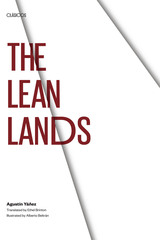 The Lean Lands
By Agustin Yáñez
University of Texas Press, 1968 What was it that flew over with such a terrifying roar? Was it, as many said, the devil, or was it that thing a few had heard of, a flying machine? And those electric lights at Jacob Gallo’s farm, were they witchcraft or were they science? The theme of this harshly powerful novel is the impact of modern technology and ideas on a few isolated, tradition-bound hamlets in the aftermath of the Mexican Revolution of 1910. The old ways are represented by Epifanio Trujillo, the cacique of the region, now ailing and losing his grip on things; by ancient Madre Matiana, the region’s midwife, healer, counselor, and oracle; by penniless Rómulo and his wife Merced. “Progress” is represented by Don Epifanio’s bastard son Jacob, who acquired money and influence elsewhere during the Revolution and who now, against his father’s will, brings electricity, irrigation, fertilizers, and other modernities to the lean lands—together with armed henchmen. The conflict between the old and the new builds slowly and inexorably to a violent climax that will long remain in the reader’s memory. The author has given psychological and historical depth to his story by alternating the passages of narrative and dialogue with others in which several of the major characters brood on the past, the present, and the future. For instance, Matiana, now in her eighties, touchingly remembers how she was married and widowed before she had reached her seventeenth birthday. This dual technique is superbly handled, so that people and events have both a vivid actuality and an inner richness of meaning. The impact of the narrative is intensified by the twenty-one striking illustrations by Alberto Beltrán.
Lean Product Development: A manager's guide
Colin Mynott
The Institution of Engineering and Technology, 2012 Lean product development (LPD) is the application of lean principles to product development, aiming to develop new or improved products that are successful in the market. It is a cross-functional activity that seeks to uncover product knowledge hidden within the end-to-end production flow, typically in the hand-over points between functional units. LPD deals with the complete process from gathering and generating ideas, through assessing potential success, to developing concepts, evaluating them to create a best concept, detailing the product, testing/developing it and handing over to the manufacture. LPD is performed against a background of continuously assessing and reducing risk of market failure.
A Lean Year and Other Stories
Robert Laxalt
University of Nevada Press, 1994 In this collection of sixteen short stories, Robert Laxalt illuminates the Nevada of the 1950s. Written when Laxalt was in his twenties, the stories are as fresh as if they were penned yesterday. Humanity good and bad, humor and cruelty, satire and adventure are found in these early stories of a Nevada poised on the brink of change. In the lead story, Cowboy Clint Hamilton laments that the town is “getting more like a big city every day” as the traditional gambling joints of earlier times give way to the gaudy casinos that will soon become modern glitz. Sobering experiences from his days as a reporter give Laxalt an insight into murderers and prison life and lethal gas chambers. In a chilling short story, “The Snake Pen,” we find the seed of Robert Laxalt’s celebrated novel, A Man In the Wheatfield.
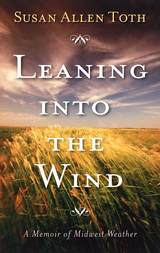 Leaning Into The Wind: A Memoir Of Midwest Weather
Susan Allen Toth
University of Minnesota Press, 2006 Midwesterners love to talk about the weather, approaching the vagaries and challenges of extreme temperatures, deep snow, and oppressive humidity with good-natured complaining, peculiar pride, and communal spirit. Such a temperamental climate can at once terrify and disturb, yet offer unparalleled solace and peace.Leaning into the Wind is a series of ten intimate essays in which Susan Allen Toth, who has spent most of her life in Iowa, Minnesota, and Wisconsin, reveals the ways in which weather has challenged and changed her perceptions about herself and the world around her. She describes her ever-growing awareness of and appreciation for how the weather marks the major milestones of her life. Toth explores issues as large as weather and spirituality in “Who Speaks in the Pillar of Cloud?” and topics as small as a mosquito in “Things That Go Buzz in the Night.” In “Storms,” a severe thunderstorm becomes a continuing metaphor for the author’s troubled first marriage. Two essays, one from the perspective of childhood and one from late middle age, ponder how the weather seems different at various stages of life but always provides unexpected opportunities for self-discovery, change, and renewal. The perfect entertainment for anyone who loved Toth’s previous books on travel and memoir, Leaning into the Wind offers engaging and personal insights on the delights and difficulties of Midwest weather. Susan Allen Toth is the author of several books, including Blooming: A Small-Town Girlhood (1981), My Love Affair with England (1992), England As You Like It (1995), and England for All Seasons (1997). She has contributed to the New York Times, the Washington Post, Harper’s, and Vogue. She lives in Minneapolis.
Leap of Faith
Richard Benyo
University of Scranton Press, 2009 Eastern Pennsylvania during the 1950s: King Coal has been dethroned, the railroads are all but defunct, and the region is in an economic depression. Fathers are forced to commute many miles to work, while at home the kids know no other pastime but to run wild in the woods. From the same author who intrigued readers with his whimsical stories of childhood in Jim Thorpe Never Slept Here comes an all-new batch of coming-of-age tales in Leap of Faith. In these eight stories, the adults are often offstage, leaving the children to make up the rules as they go. From the story of an unrepentant bully who gets more than he deserves to the tale of a boy who finds serenity in short bursts of flight, Richard Benyo captures a time and a place where small triumphs are enormous, where the strong rule and the swift survive, and where the outside world—beyond the mountains that enclose Mauch Chunk, Pennsylvania—seldom intrudes.
 Leaping into Dance Literacy through the Language of Dance®
Teresa Heiland
Intellect Books, 2023 An accessible introduction to dance literacy that includes practical examples and sample lesson plans.
This book presents the theory and purpose underpinning the approaches to dance literacy as explored by the Language of Dance community in the United States and the United Kingdom. Through their teacher training programs, the community is changing the face of dance-based dance literacy using the practice of motif notation.
Arts literacy can deepen dance craft and transfer arts knowledge, capacities, and skills to lifelong learning. Dance-based dance literacy practices using notation enhance learners’ flexibility, adaptability, self-direction, initiative, productivity, responsibility, leadership, and cross-cultural skills. This volume ushers in a new era for educating with dance notation that focuses on learners’ engagement by making connections between the learning domains using constructivist and constructionist learning approaches. Based on work by dance educator Ann Hutchinson Guest and expanded upon by her protégés, this is the first book of its kind to bring together theory, praxis, original research outcomes, taxonomies, model lesson plans, learning domain taxonomies of dance, and voices of dance teachers who have explored using dance notation literacy.
Leaping Poetry: An Idea with Poems and Translations
Robert Bly
University of Pittsburgh Press, 2008 Leaping Poetry is Robert Bly's testament to the singular importance of the artistic leap that bridges the gap between conscious and unconscious thought in any great work of art; the process that Bly refers to as “riding on dragons.” Originally published in 1972 in Bly's literary journal The Seventies, Leaping Poetry is part anthology and part commentary, wherein Bly seeks to rejuvenate modern Western poetry through his revelations of “leaping” as found in the works of poets from around the world, including Federico Garcia Lorca, Chu Yuan, Tomas Tranströmer, and Allen Ginsberg, among others, while also outlining the basic principles that shape his own poetry. Bly seeks the use of quick, free association of the known and the unknown-the innate animal and rational cognition-which, he maintains, have been kept apart in the development of Western religious, intellectual, and literary thought.
Learn About . . . Texas Birds
By Mark W. Lockwood
University of Texas Press, 2007 Children from six to twelve are introduced to the most frequently seen and interesting Texas birds. Youngsters can color eye-catching line drawings of various birds in typical habitats, while an easy-to-read text gives important facts about the birds, and several fun games are instructive and challenging.
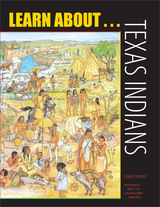 Learn About . . . Texas Indians
By Georg Zappler
University of Texas Press, 2007 Here is an entertaining and educational activity book for children from six to twelve on the always-popular topic of American Indians—except that the subject has been narrowed to only those Native Americans known to have lived in the Lone Star State. Eye-catching line drawings invite children to color a wide assortment of scenes from the diverse lives of the many different groups of Indians native to Texas. The settings in the first part of the book range from the mammoth- and bison-hunting Paleo-Indians of over 11,000 years ago to the various nomadic and agricultural groups encountered by sixteenth-century Spanish explorers. Further drawings reflect changes over the centuries as Indian lifeways were forever altered and often destroyed due to contact with white newcomers who all claimed their land. In addition to the many drawings, a number of fun-filled and challenging games help build youngsters' Indian knowledge.
 Learn Colors and Shapes with Shakur!: A Shakur Series Board Book
Andrea Sonnier
Gallaudet University Press, 2024 Shakur encounters a series of colorful shapes — red circles, green rectangles, purple stars, and more. As he tries to identify each color and shape, and then think of an object that is the same color, he experiences a range of emotions. He feels frustrated when he makes mistakes, but with perseverance and encouragement, he triumphs over the challenges. Children will share in Shakur’s feeling of accomplishment as they learn their colors and shapes alongside him.
About the Shakur Series:
The Shakur Series features Black deaf characters who use American Sign Language, offering a unique and inclusive reading experience for children. The vibrant illustrations showcase a signing family and will captivate young minds, while the engaging text reinforces learning. These charming board books contain positive messages and practical lessons, support early childhood development, and encourage children to explore the world with Shakur. This series honors and celebrates Black deaf experiences through everyday adventures that will resonate with young children and their families.
Published in partnership with The Laurent Clerc National Deaf Education Center.
Learnable Classes of Categorial Grammars
Makoto Kanazawa
CSLI, 1998 This book investigates the learnability of various classes of classical categorial grammars within the Gold paradigm of identification in the limit from positive data. Learning from structure and learning from flat strings are considered. The class of k-valued grammars, for k = 1,2,3,..., is shown to be learnable both from structures and from strings, while the class of least-valued grammars and the class of least-cardinality grammars are shown to be learnable from structures. In proving these learnable results, crucial use is made of a theorem on the concept known as finite elasticity. The learning algorithms used in this work build on Buszkowski and Penn's algorithm for finding categorial grammars from input consisting of functor-argument structures.
The Learned and the Lewed: Studies in Chaucer and Medieval Literature
Larry D. Benson
Harvard University Press, 1974 The essays gathered in this volume, organized around the theme of medieval literature, display a great range of subjects and of critical approaches. One third of the pieces deal with Chaucer: his use of mythology, his characters, narrative techniques, his treatment of courtly love. Other contributions focus on medieval proverbs and ballads, medieval use of classical authors, John Gower, Lydgate, Icelandic saga, the Middle Scots poets, problems of teaching medieval drama in twentieth-century classrooms, French influences on Middle English literature, and the tale of Robin Hood.
The Learned Banqueters, Volume I: Books 1–3.106e
Athenaeus
Harvard University Press, 2006 Scholars at dinner.
In The Learned Banqueters, Athenaeus describes a series of dinner parties at which the guests quote extensively from Greek literature. The work (which dates to the very end of the second century AD) is amusing reading and of extraordinary value as a treasury of quotations from works now lost. Athenaeus also preserves a wide range of information about different cuisines and foodstuffs; the music and entertainments that ornamented banquets; and the intellectual talk that was the heart of Greek conviviality. S. Douglas Olson has undertaken to produce a complete new edition of the work, replacing the previous seven-volume Loeb Athenaeus (published under the title Deipnosophists).
The Learned Banqueters, Volume II: Books 3.106e–5
Athenaeus
Harvard University Press, 2006 Scholars at dinner.
In The Learned Banqueters, Athenaeus describes a series of dinner parties at which the guests quote extensively from Greek literature. The work (which dates to the very end of the second century AD) is amusing reading and of extraordinary value as a treasury of quotations from works now lost. Athenaeus also preserves a wide range of information about different cuisines and foodstuffs; the music and entertainments that ornamented banquets; and the intellectual talk that was the heart of Greek conviviality. S. Douglas Olson has undertaken to produce a complete new edition of the work, replacing the previous seven-volume Loeb Athenaeus (published under the title Deipnosophists).
The Learned Banqueters, Volume III: Books 6–7
Athenaeus
Harvard University Press, 2006 Scholars at dinner.
In The Learned Banqueters, Athenaeus describes a series of dinner parties at which the guests quote extensively from Greek literature. The work (which dates to the very end of the second century AD) is amusing reading and of extraordinary value as a treasury of quotations from works now lost. Athenaeus also preserves a wide range of information about different cuisines and foodstuffs; the music and entertainments that ornamented banquets; and the intellectual talk that was the heart of Greek conviviality. S. Douglas Olson has undertaken to produce a complete new edition of the work, replacing the previous seven-volume Loeb Athenaeus (published under the title Deipnosophists).
The Learned Banqueters, Volume IV: Books 8–10.420e
Athenaeus
Harvard University Press, 2006 Scholars at dinner.
In The Learned Banqueters, Athenaeus describes a series of dinner parties at which the guests quote extensively from Greek literature. The work (which dates to the very end of the second century AD) is amusing reading and of extraordinary value as a treasury of quotations from works now lost. Athenaeus also preserves a wide range of information about different cuisines and foodstuffs; the music and entertainments that ornamented banquets; and the intellectual talk that was the heart of Greek conviviality. S. Douglas Olson has undertaken to produce a complete new edition of the work, replacing the previous seven-volume Loeb Athenaeus (published under the title Deipnosophists).
The Learned Banqueters, Volume V: Books 10.420e–11
Athenaeus
Harvard University Press, 2006 Scholars at dinner.
In The Learned Banqueters, Athenaeus describes a series of dinner parties at which the guests quote extensively from Greek literature. The work (which dates to the very end of the second century AD) is amusing reading and of extraordinary value as a treasury of quotations from works now lost. Athenaeus also preserves a wide range of information about different cuisines and foodstuffs; the music and entertainments that ornamented banquets; and the intellectual talk that was the heart of Greek conviviality. S. Douglas Olson has undertaken to produce a complete new edition of the work, replacing the previous seven-volume Loeb Athenaeus (published under the title Deipnosophists).
The Learned Banqueters, Volume VI: Books 12–13.594b
Athenaeus
Harvard University Press, 2006 Scholars at dinner.
In The Learned Banqueters, Athenaeus describes a series of dinner parties at which the guests quote extensively from Greek literature. The work (which dates to the very end of the second century AD) is amusing reading and of extraordinary value as a treasury of quotations from works now lost. Athenaeus also preserves a wide range of information about different cuisines and foodstuffs; the music and entertainments that ornamented banquets; and the intellectual talk that was the heart of Greek conviviality. S. Douglas Olson has undertaken to produce a complete new edition of the work, replacing the previous seven-volume Loeb Athenaeus (published under the title Deipnosophists).
The Learned Banqueters, Volume VII: Books 13.594b–14
Athenaeus
Harvard University Press, 2006 Scholars at dinner.
In The Learned Banqueters, Athenaeus describes a series of dinner parties at which the guests quote extensively from Greek literature. The work (which dates to the very end of the second century AD) is amusing reading and of extraordinary value as a treasury of quotations from works now lost. Athenaeus also preserves a wide range of information about different cuisines and foodstuffs; the music and entertainments that ornamented banquets; and the intellectual talk that was the heart of Greek conviviality. S. Douglas Olson has undertaken to produce a complete new edition of the work, replacing the previous seven-volume Loeb Athenaeus (published under the title Deipnosophists).
The Learned Banqueters, Volume VIII: Book 15. Index
Athenaeus
Harvard University Press, 2006 Scholars at dinner.
In The Learned Banqueters, Athenaeus describes a series of dinner parties at which the guests quote extensively from Greek literature. The work (which dates to the very end of the second century AD) is amusing reading and of extraordinary value as a treasury of quotations from works now lost. Athenaeus also preserves a wide range of information about different cuisines and foodstuffs; the music and entertainments that ornamented banquets; and the intellectual talk that was the heart of Greek conviviality. S. Douglas Olson has undertaken to produce a complete new edition of the work, replacing the previous seven-volume Loeb Athenaeus (published under the title Deipnosophists).
|
|

